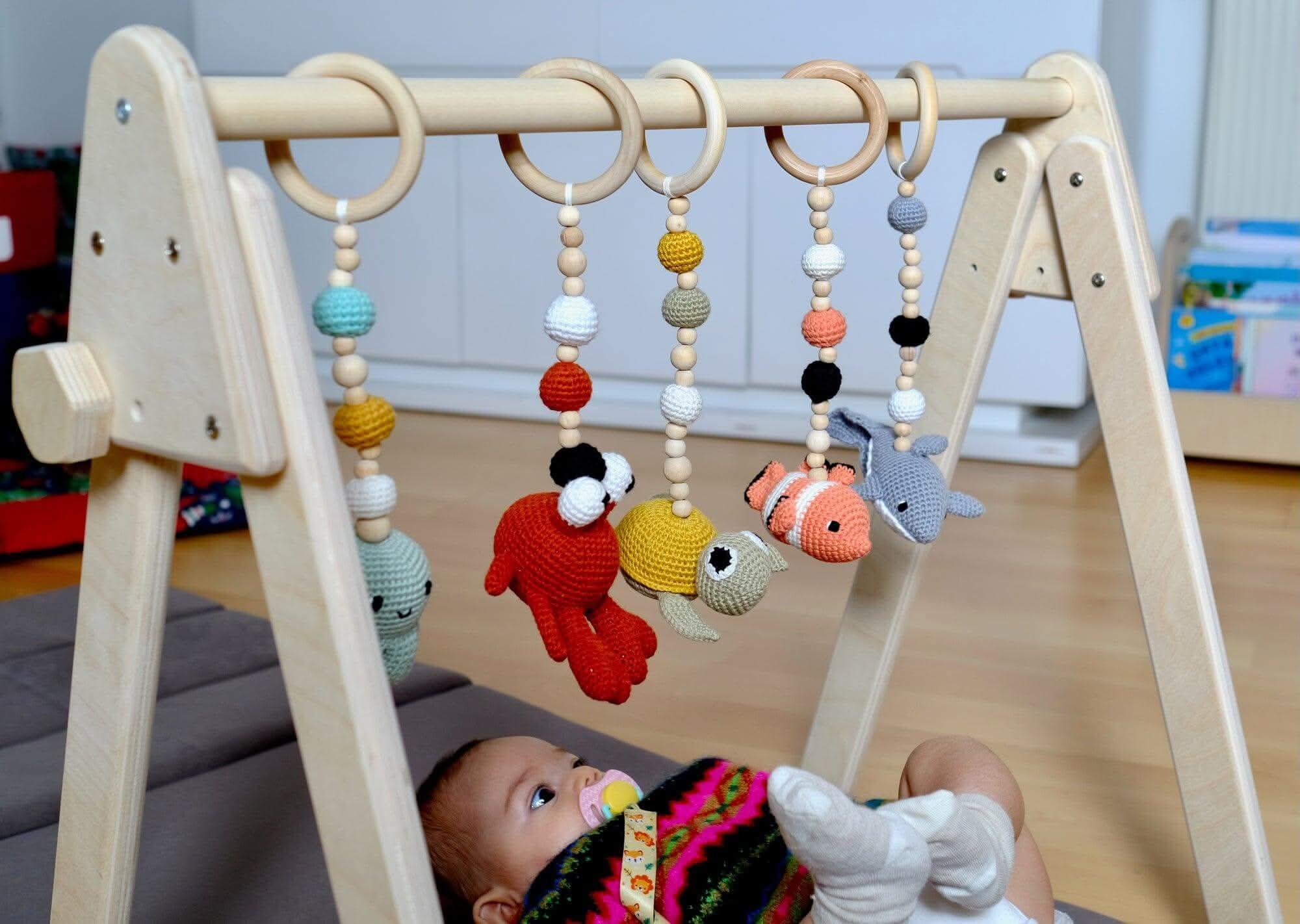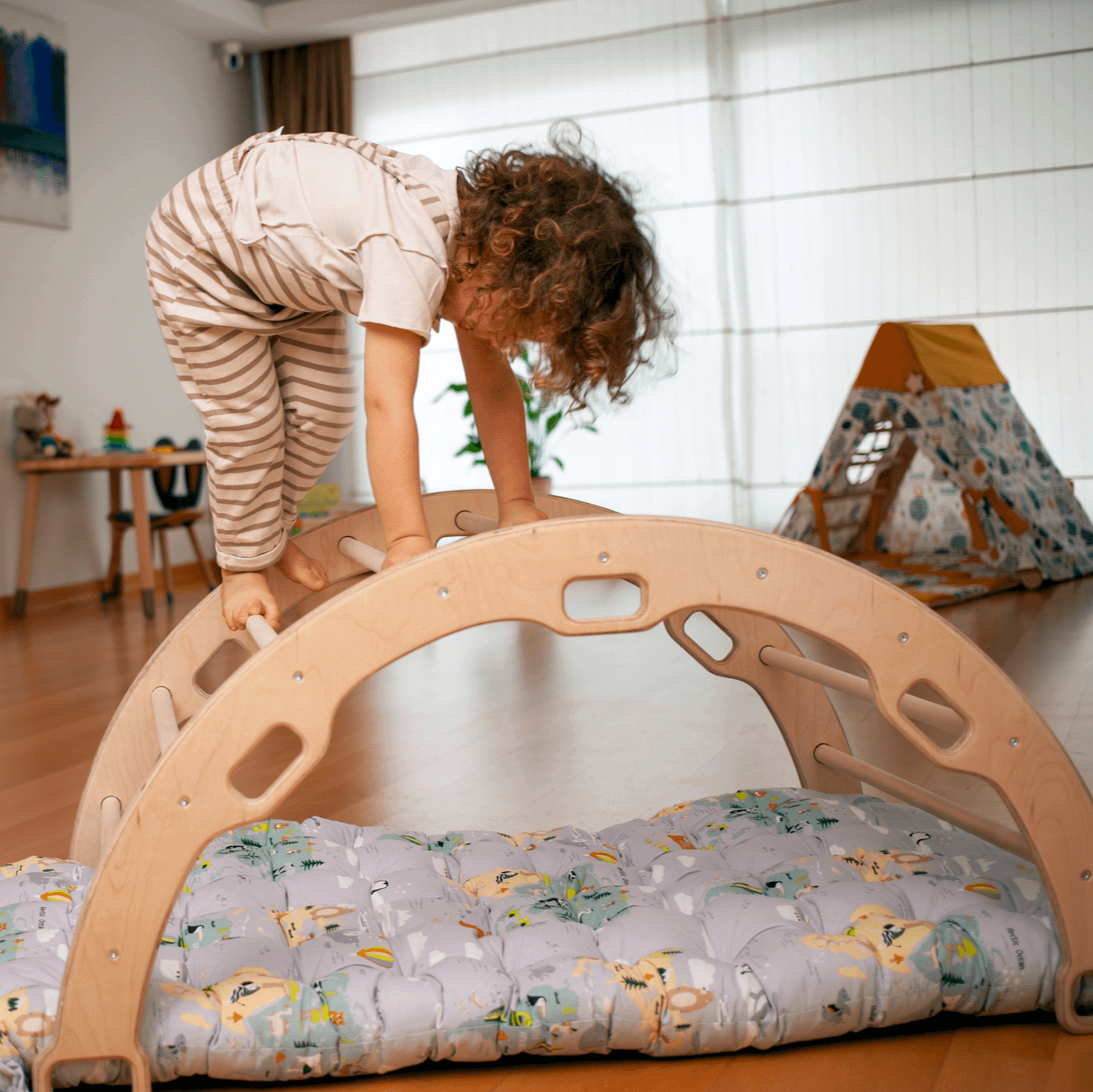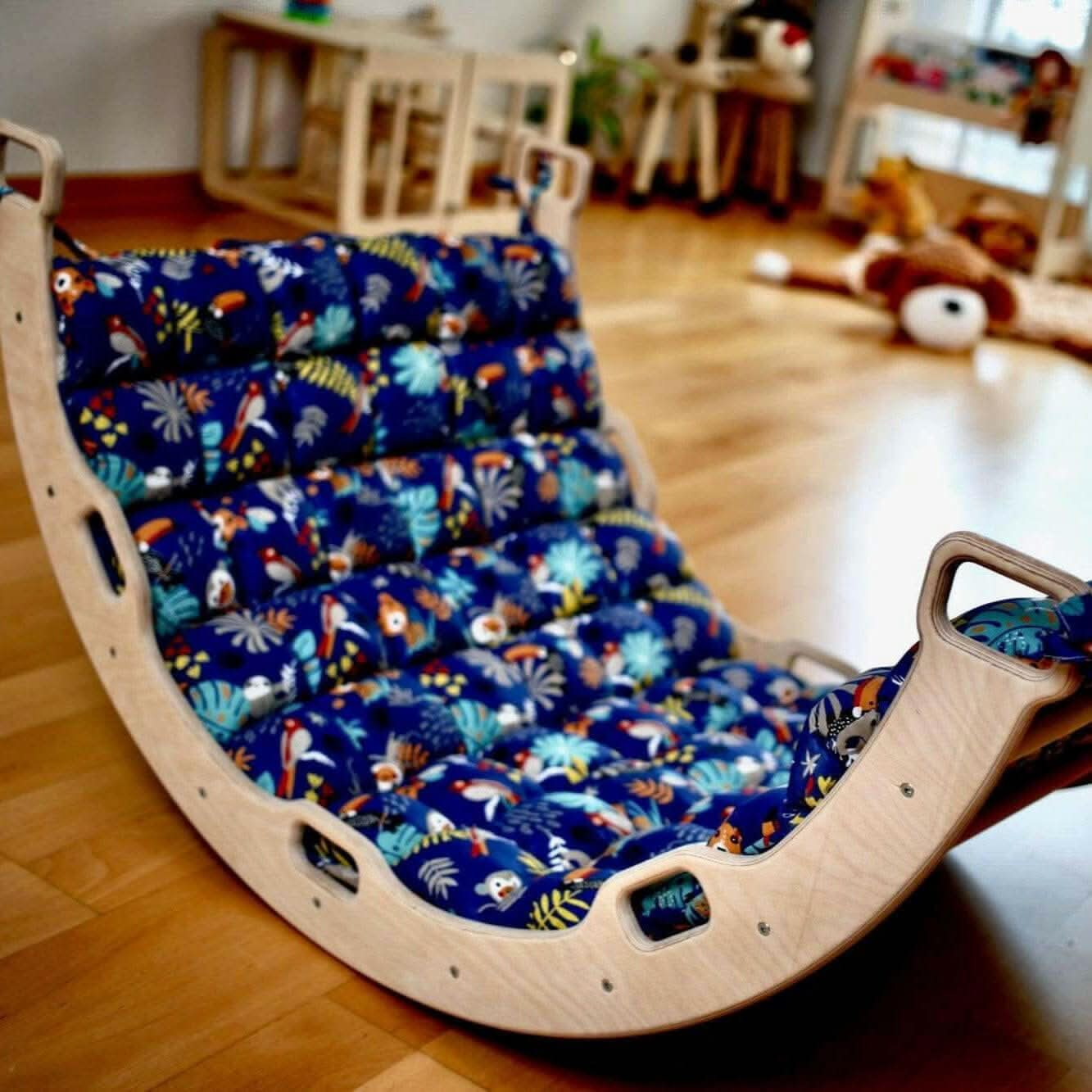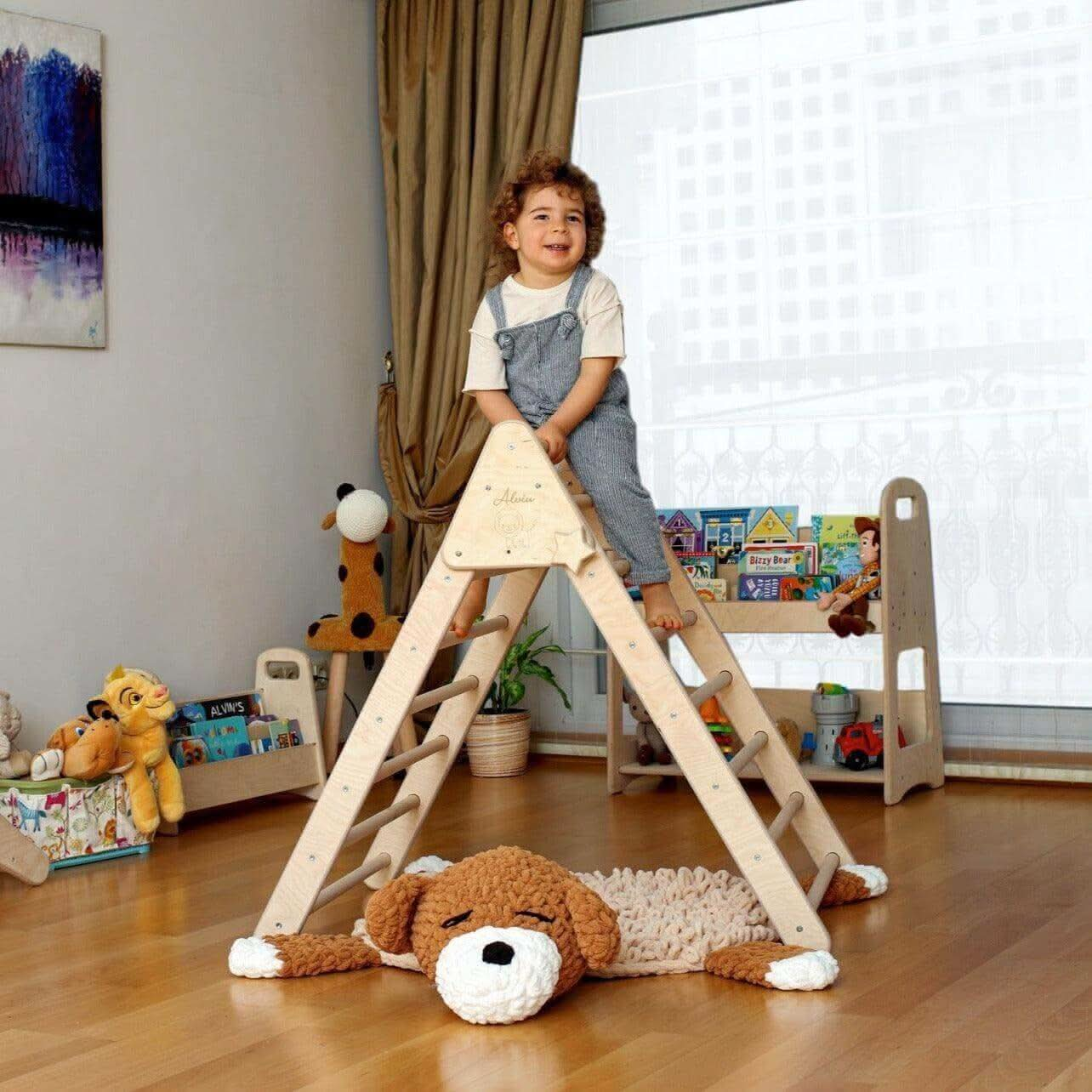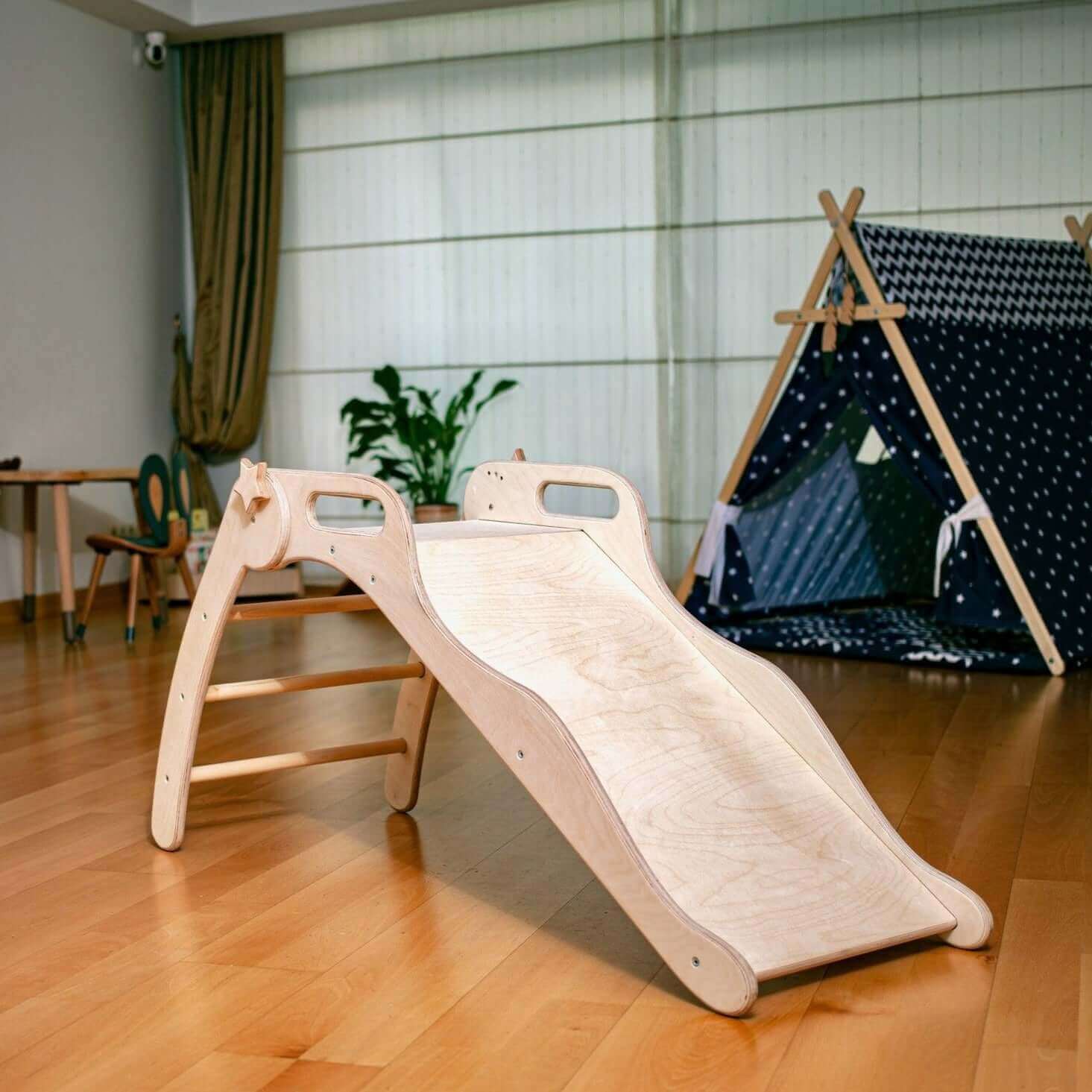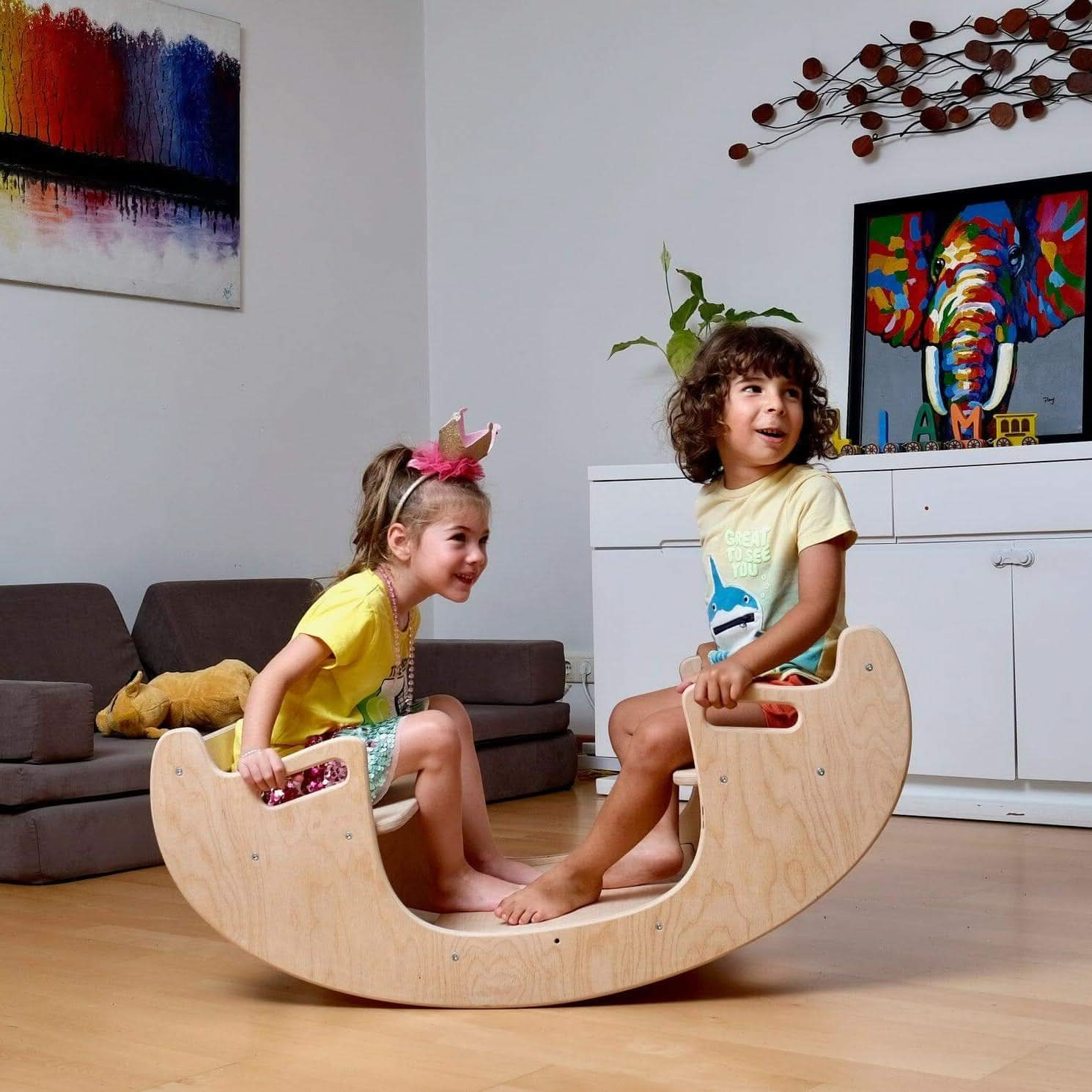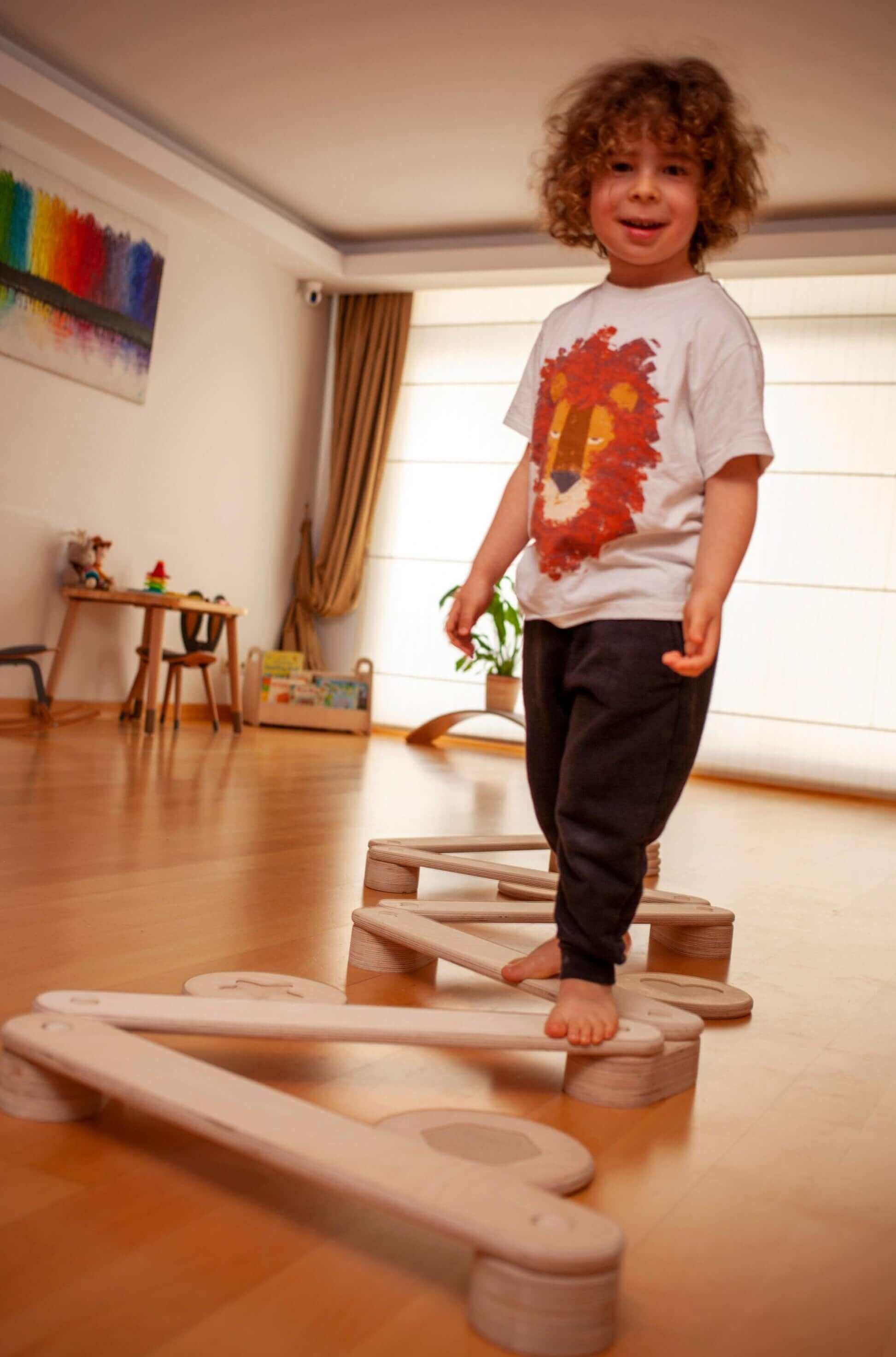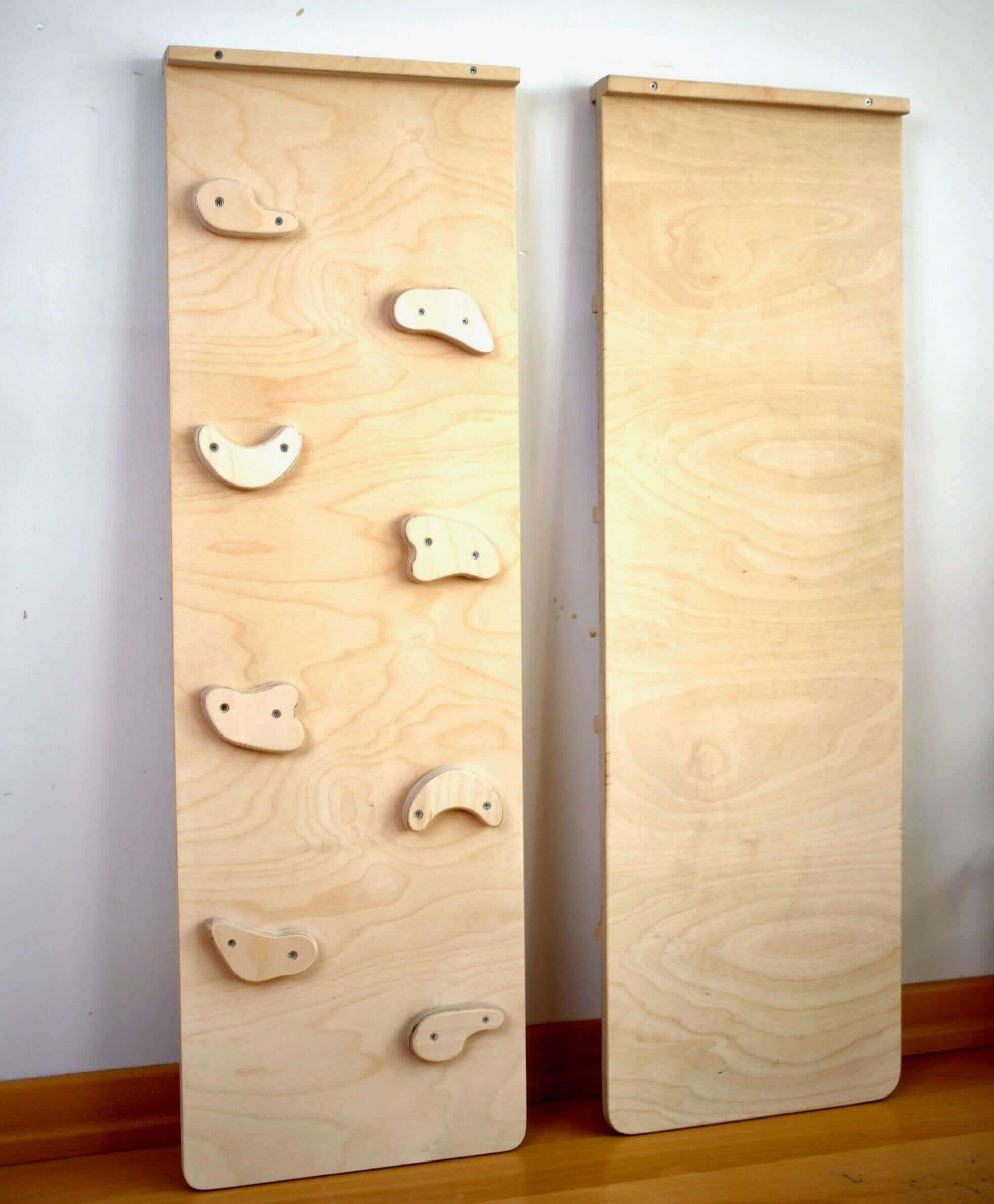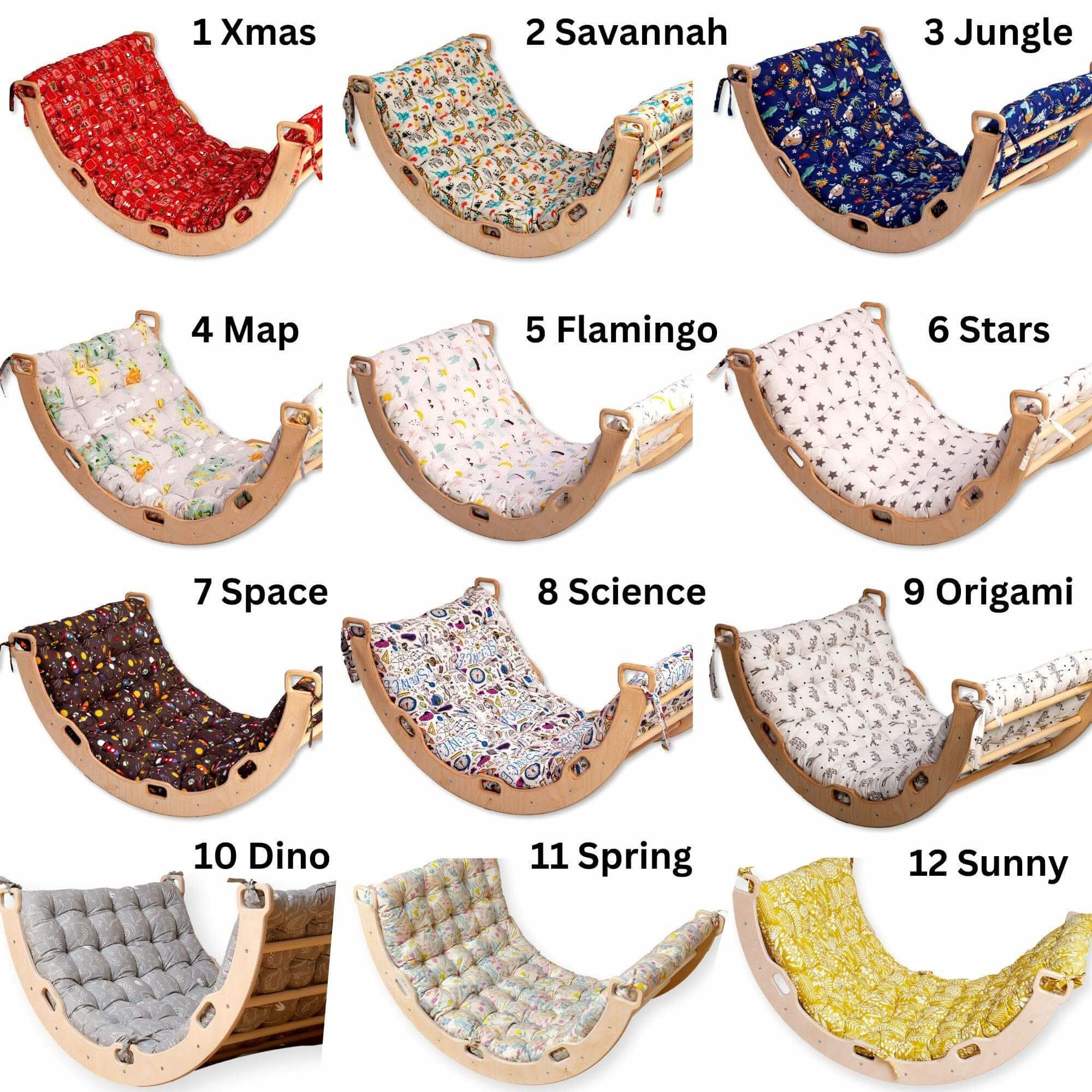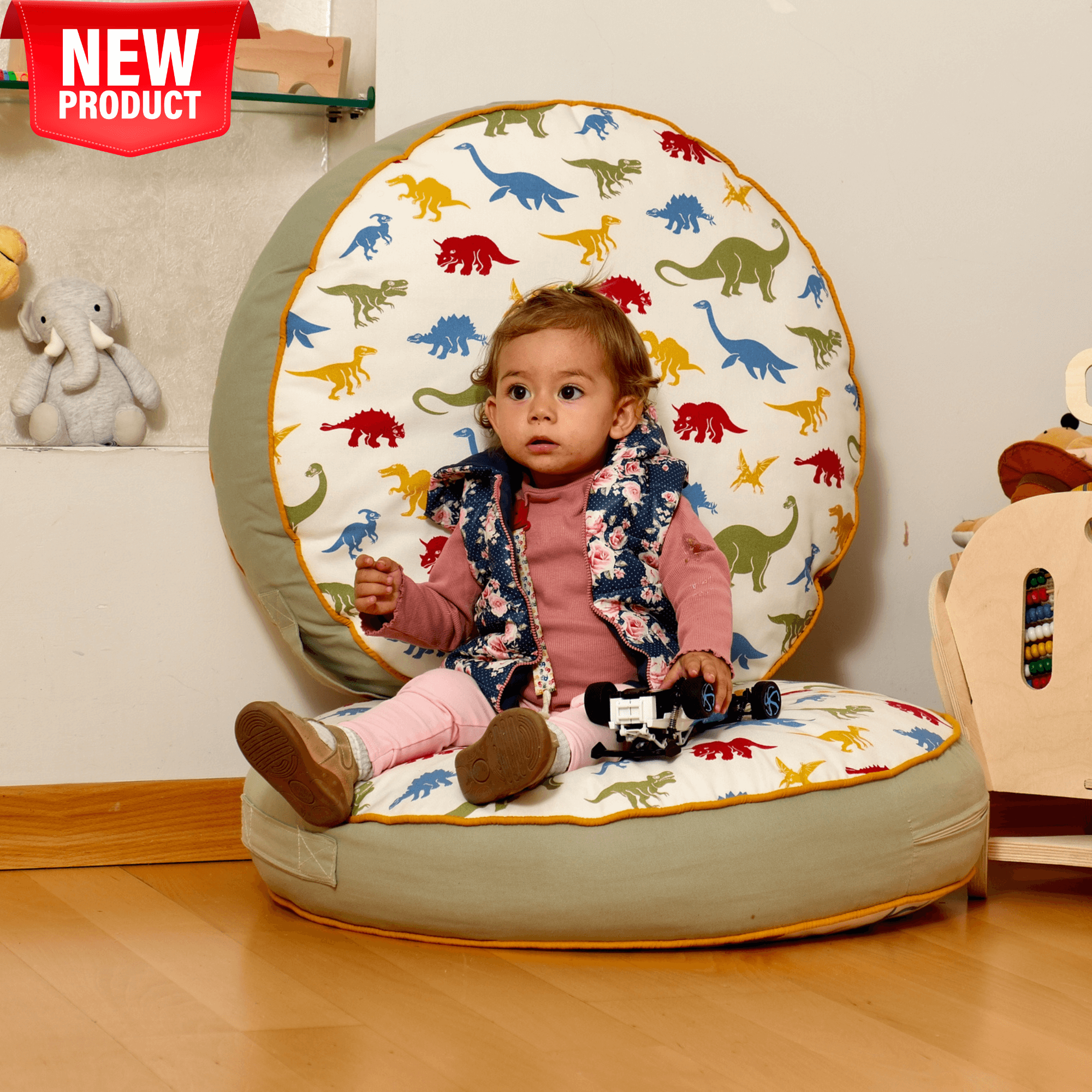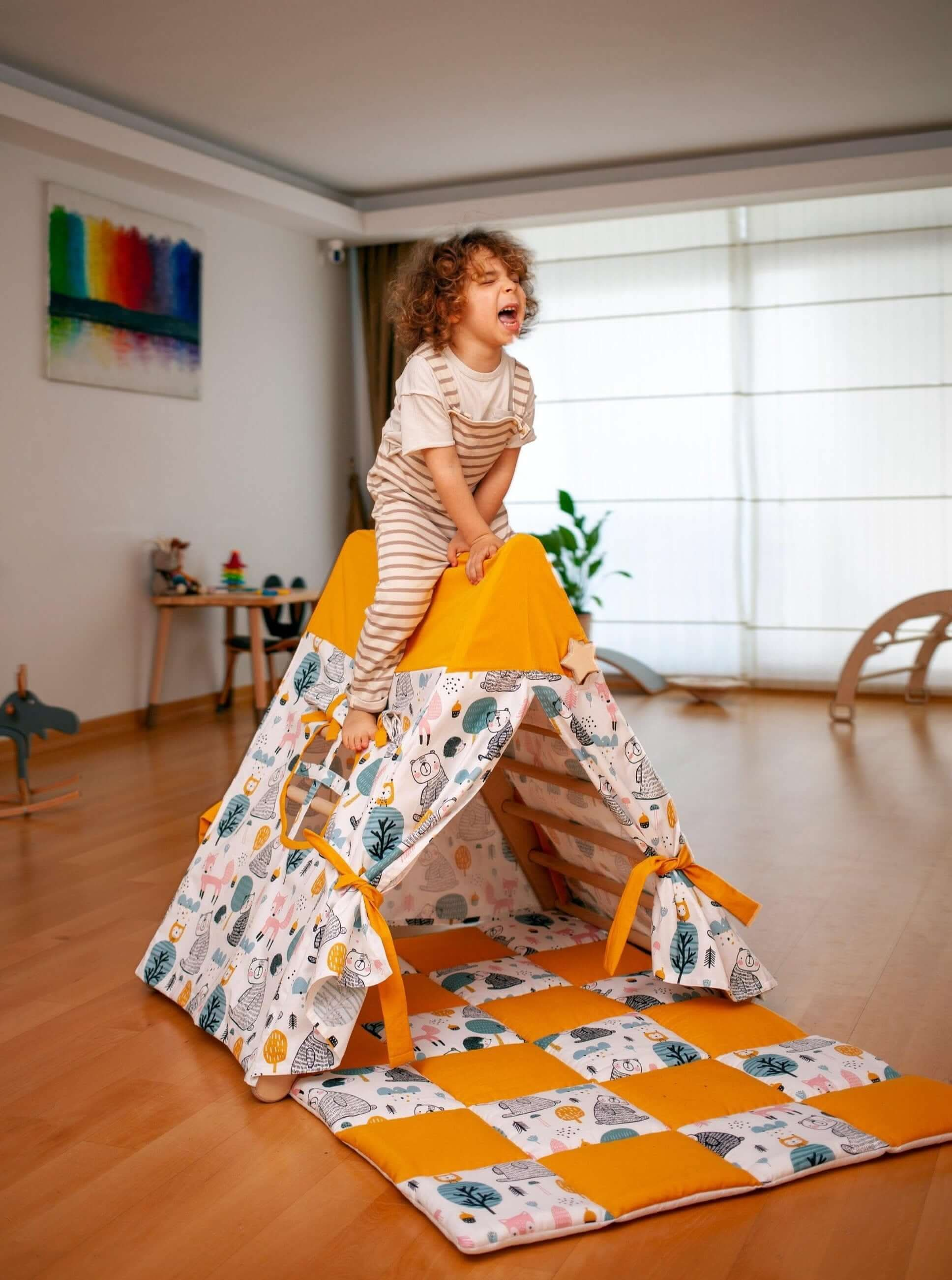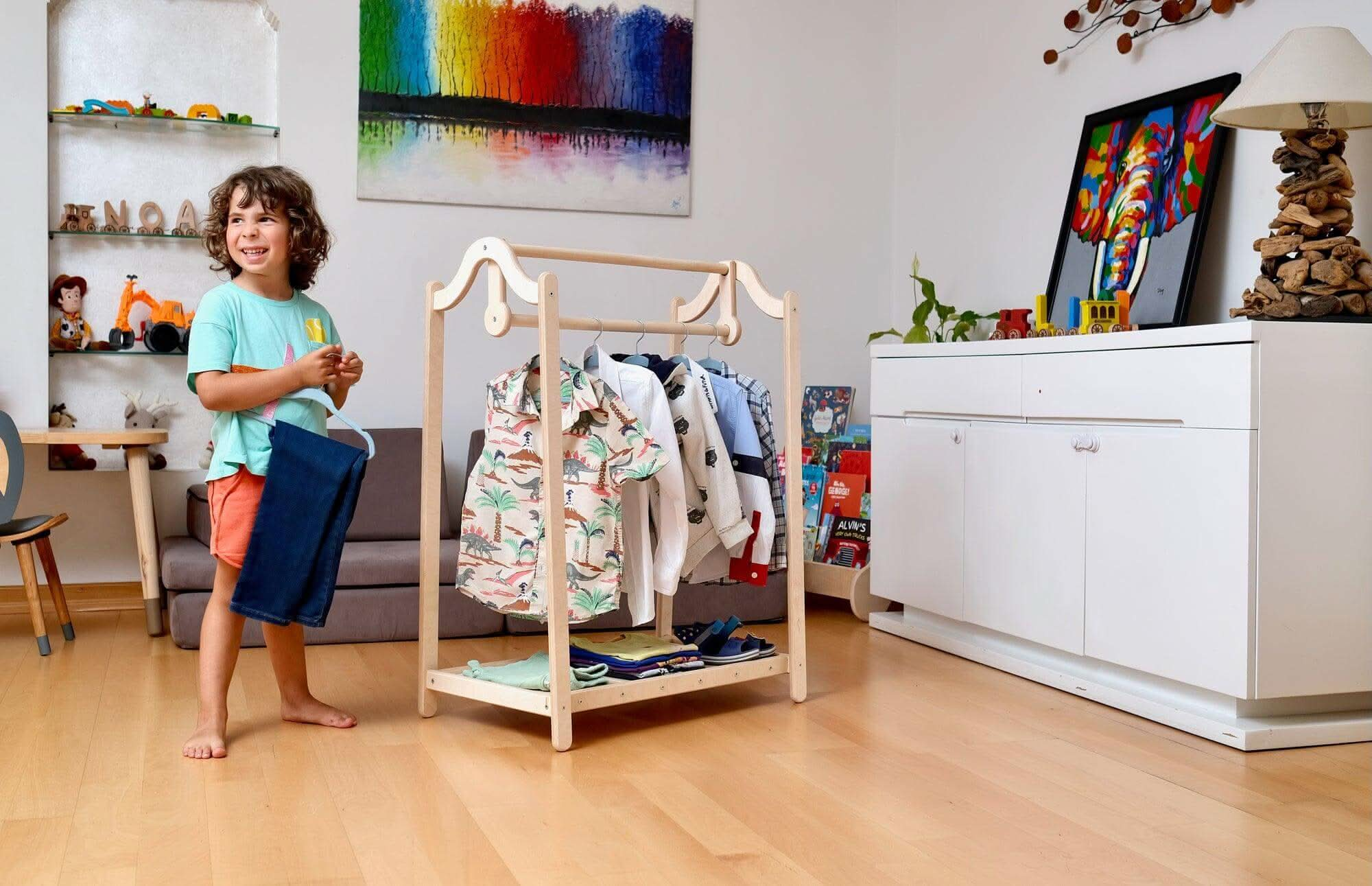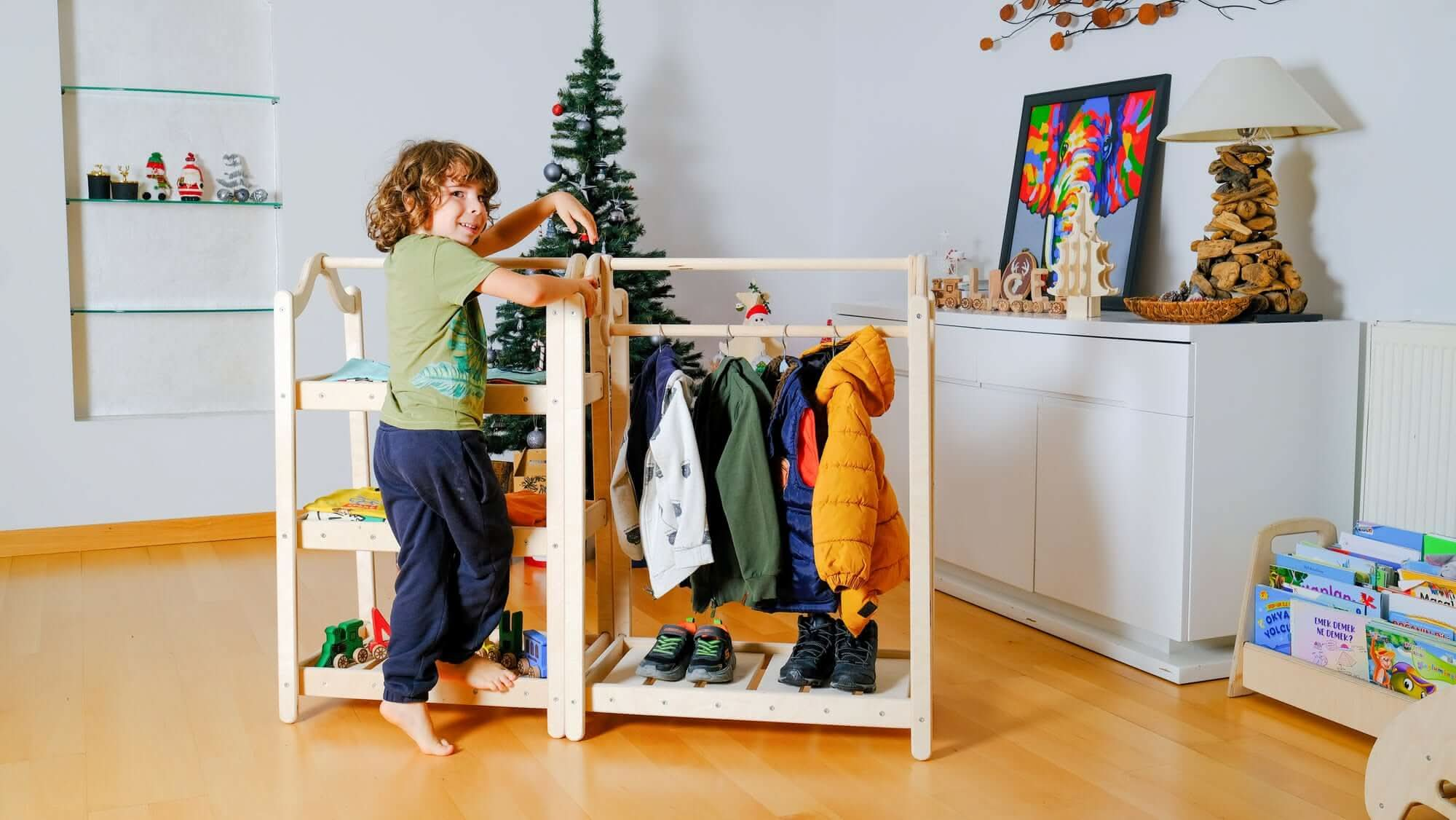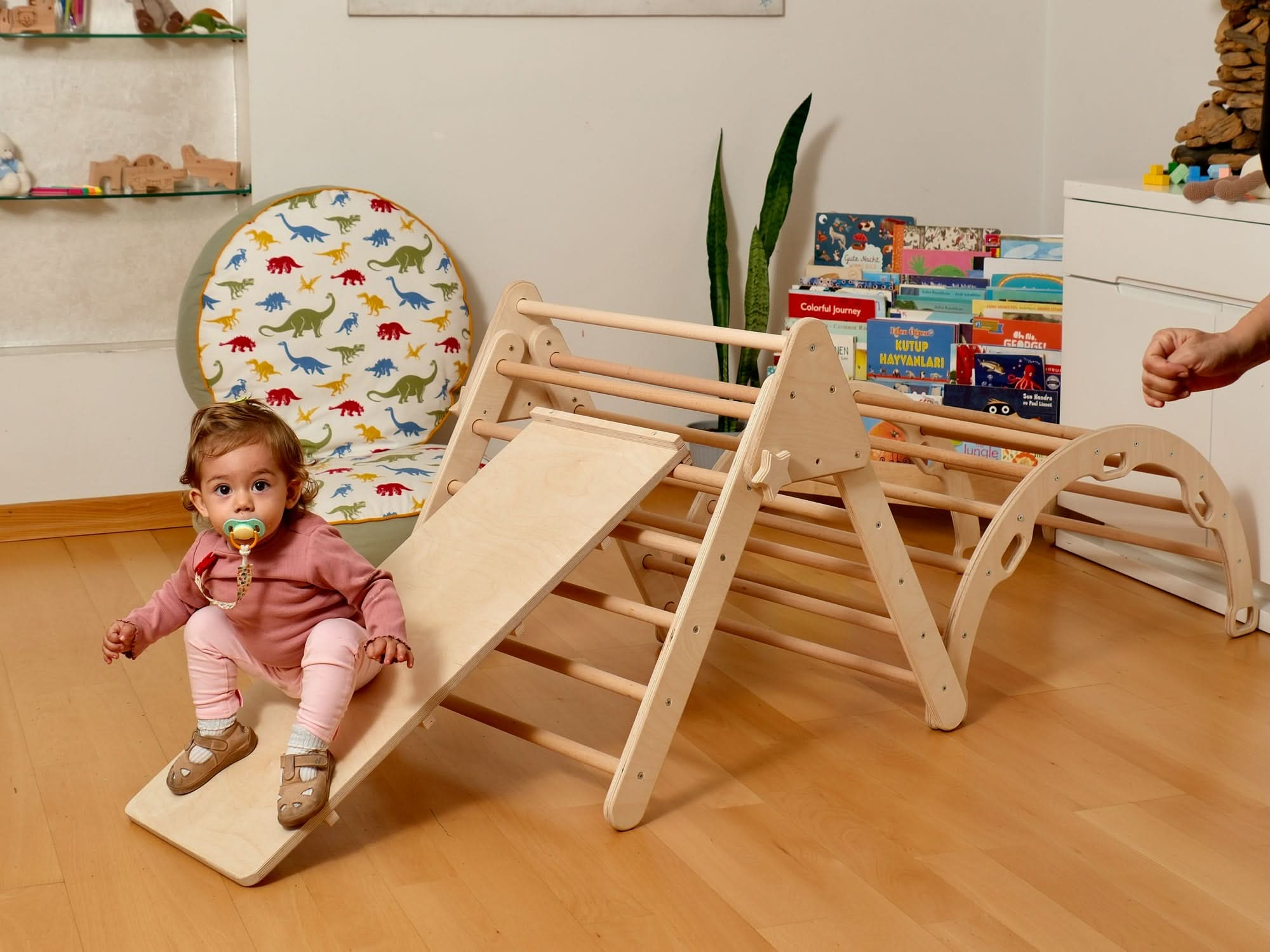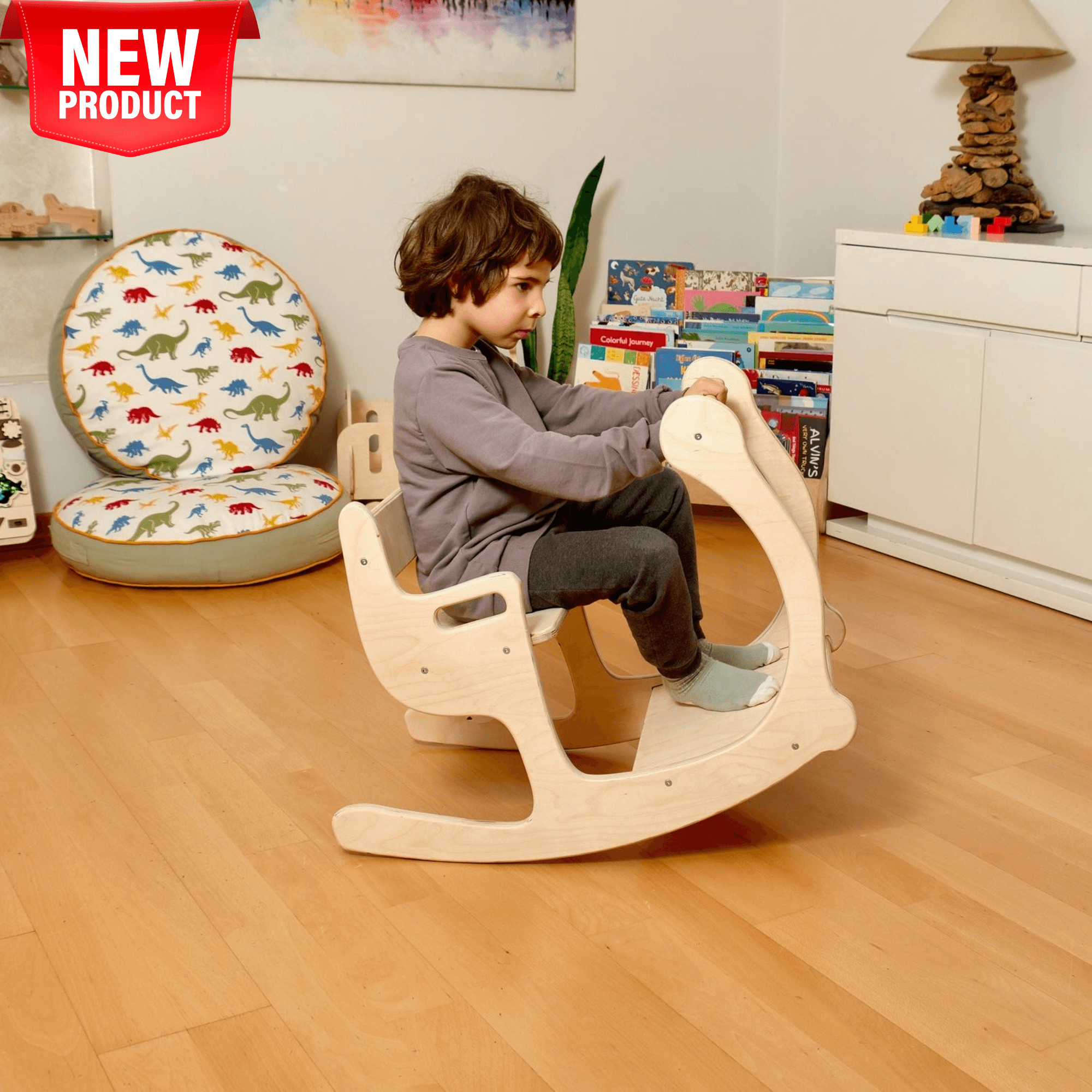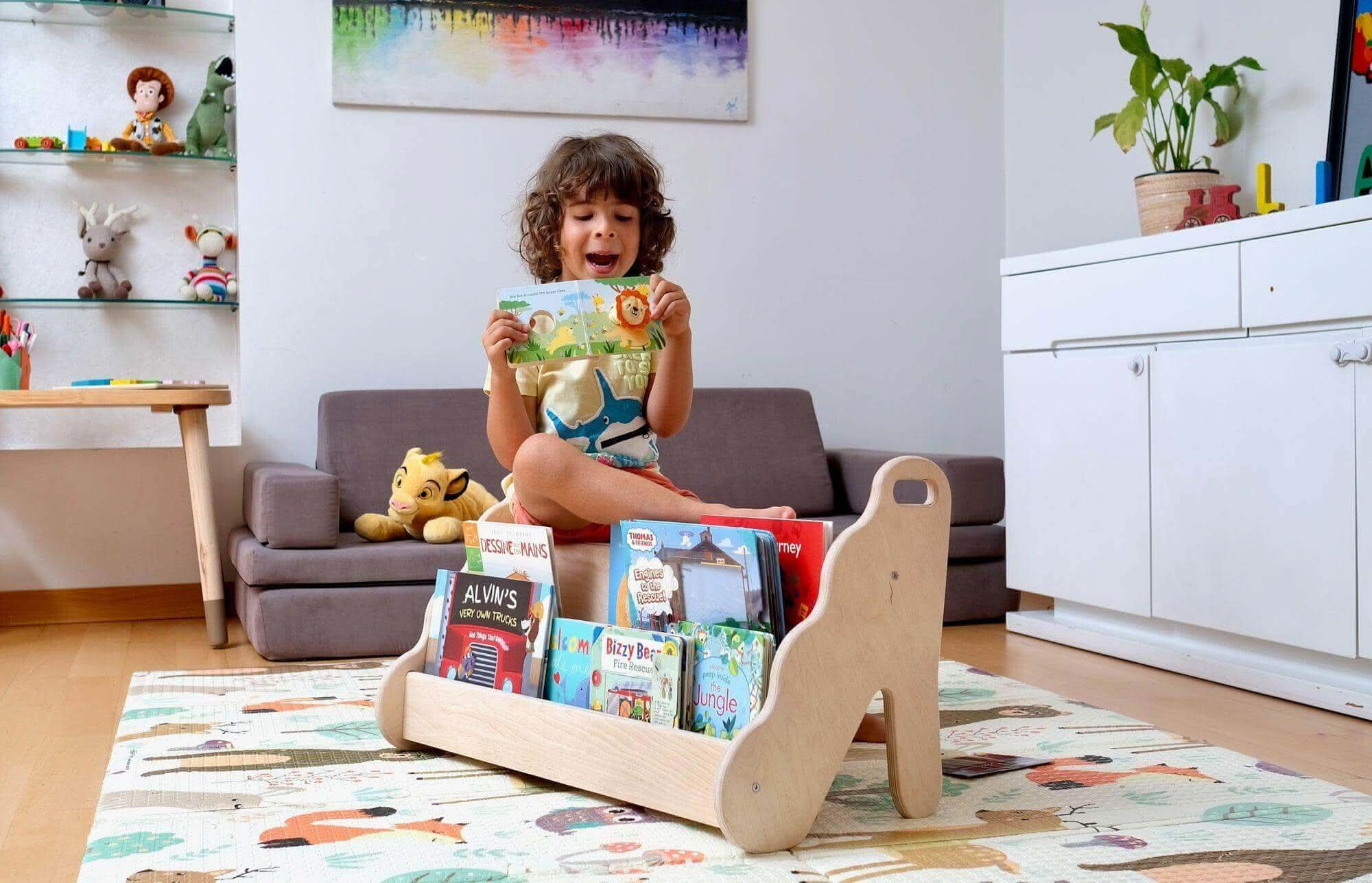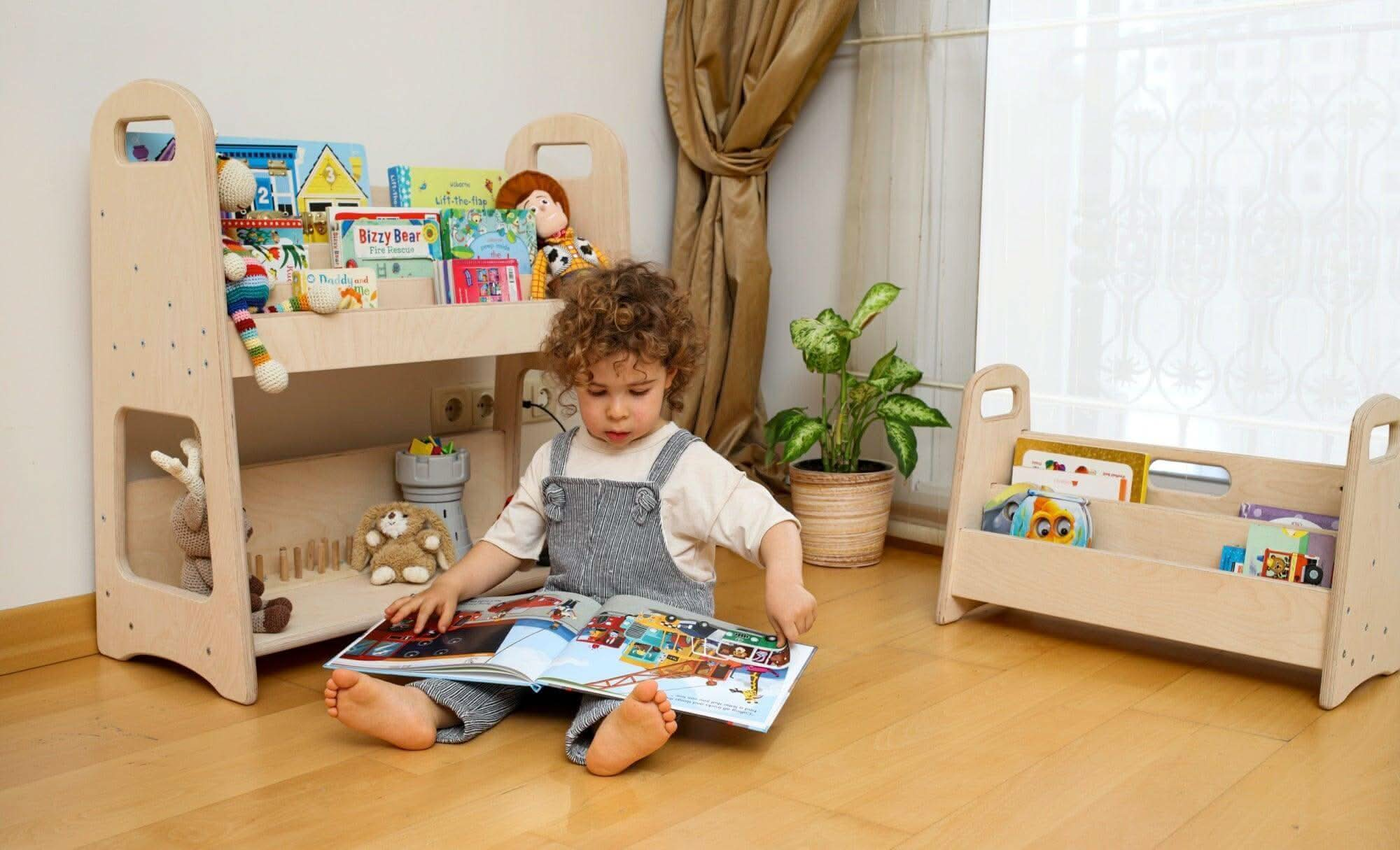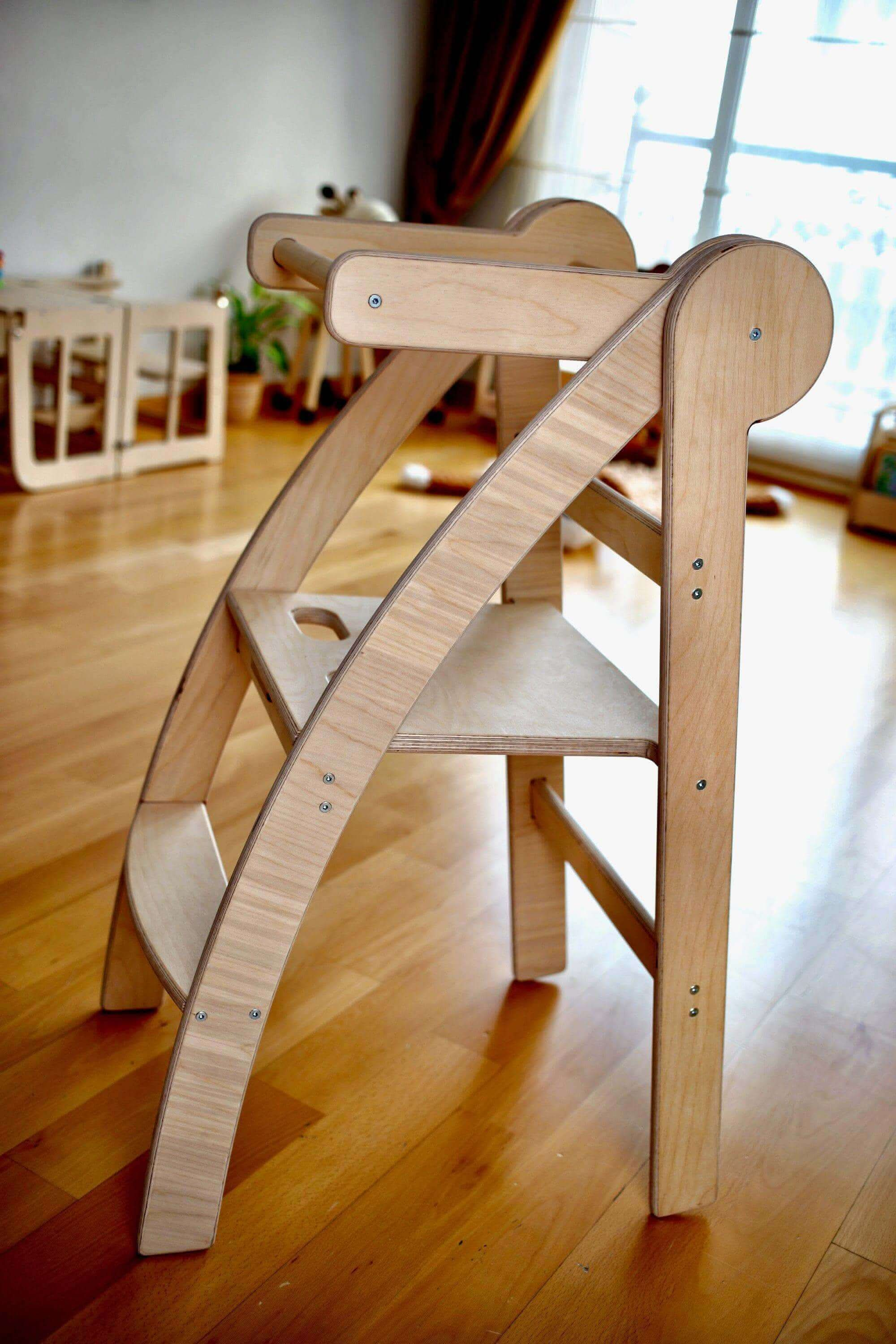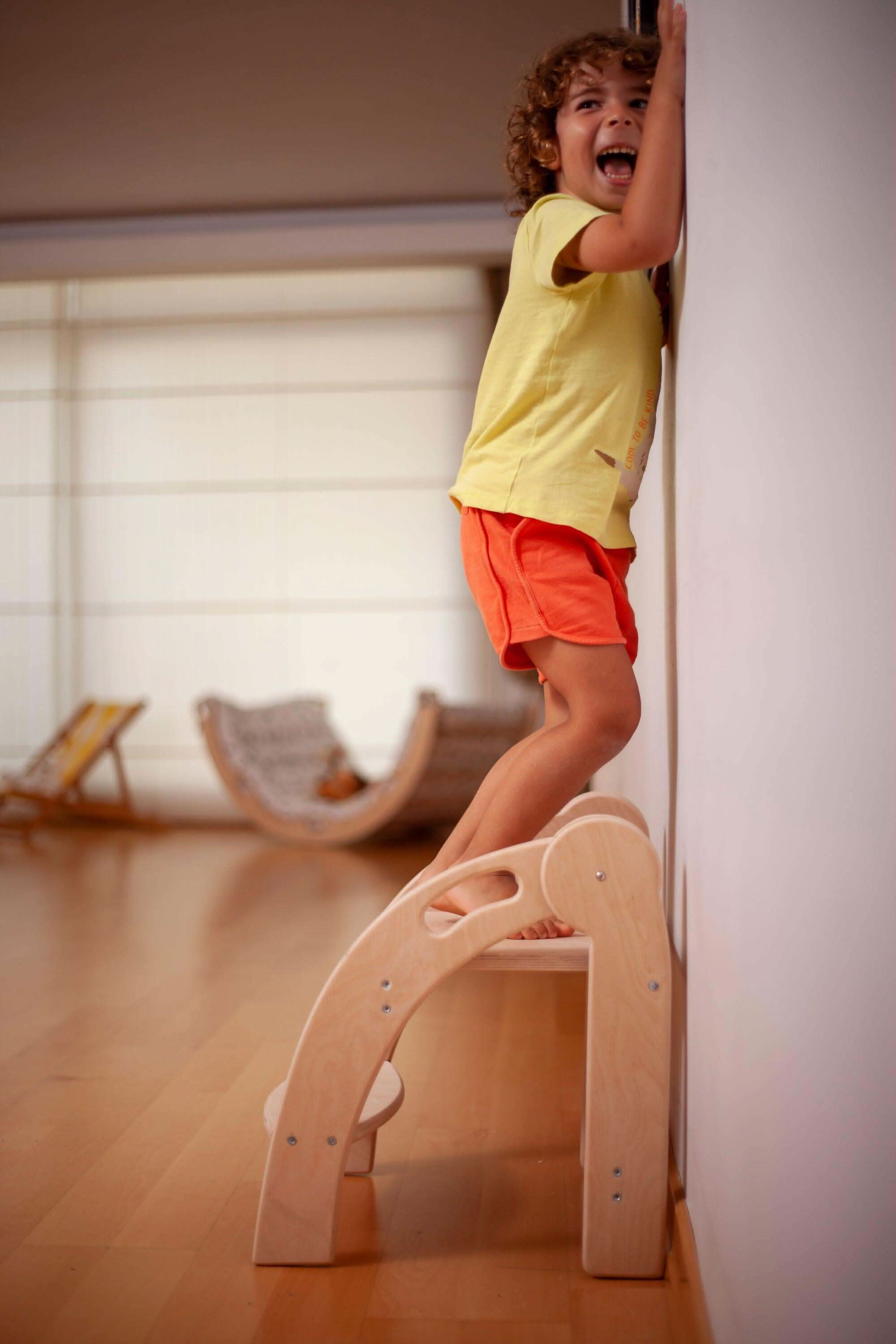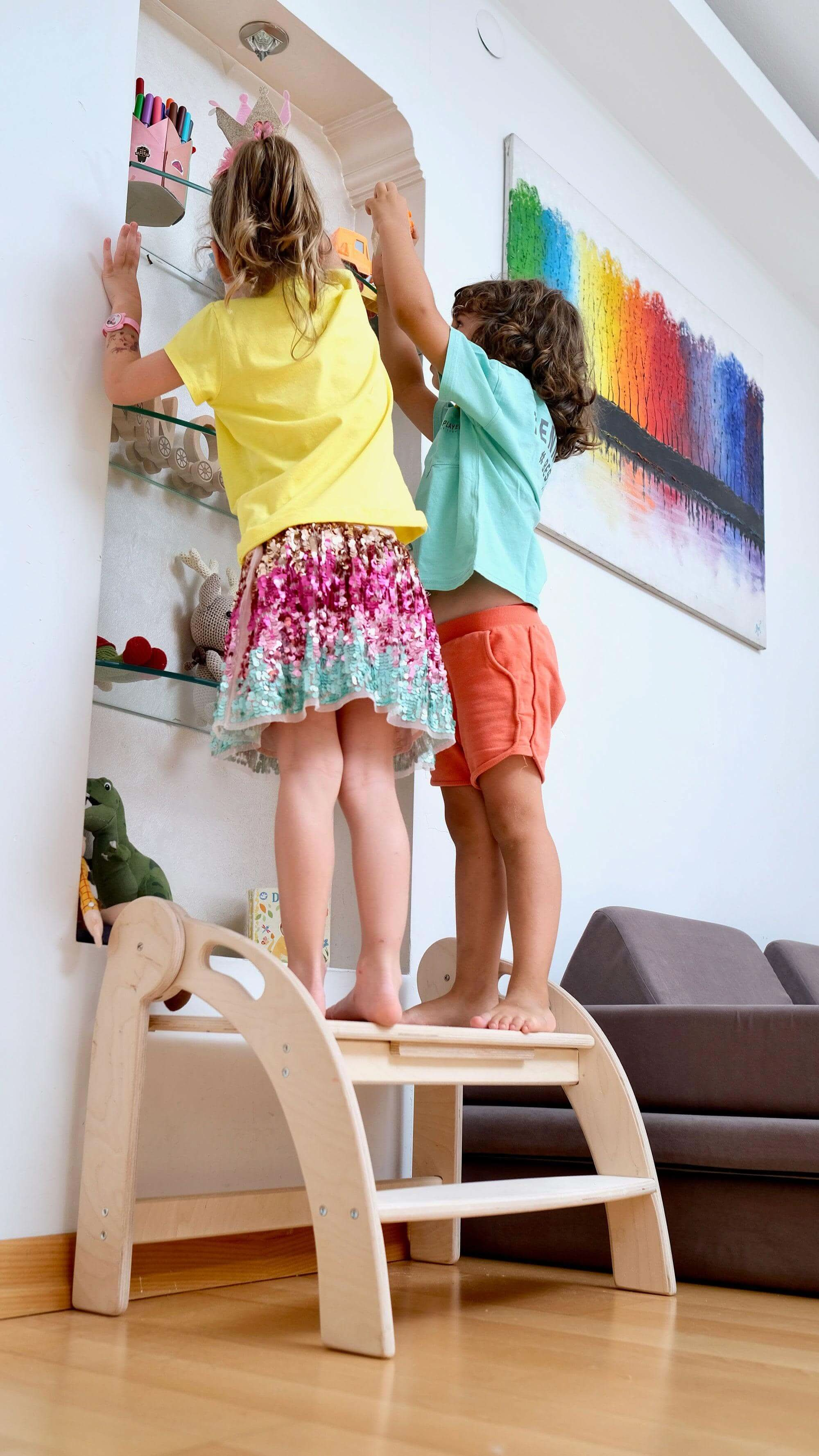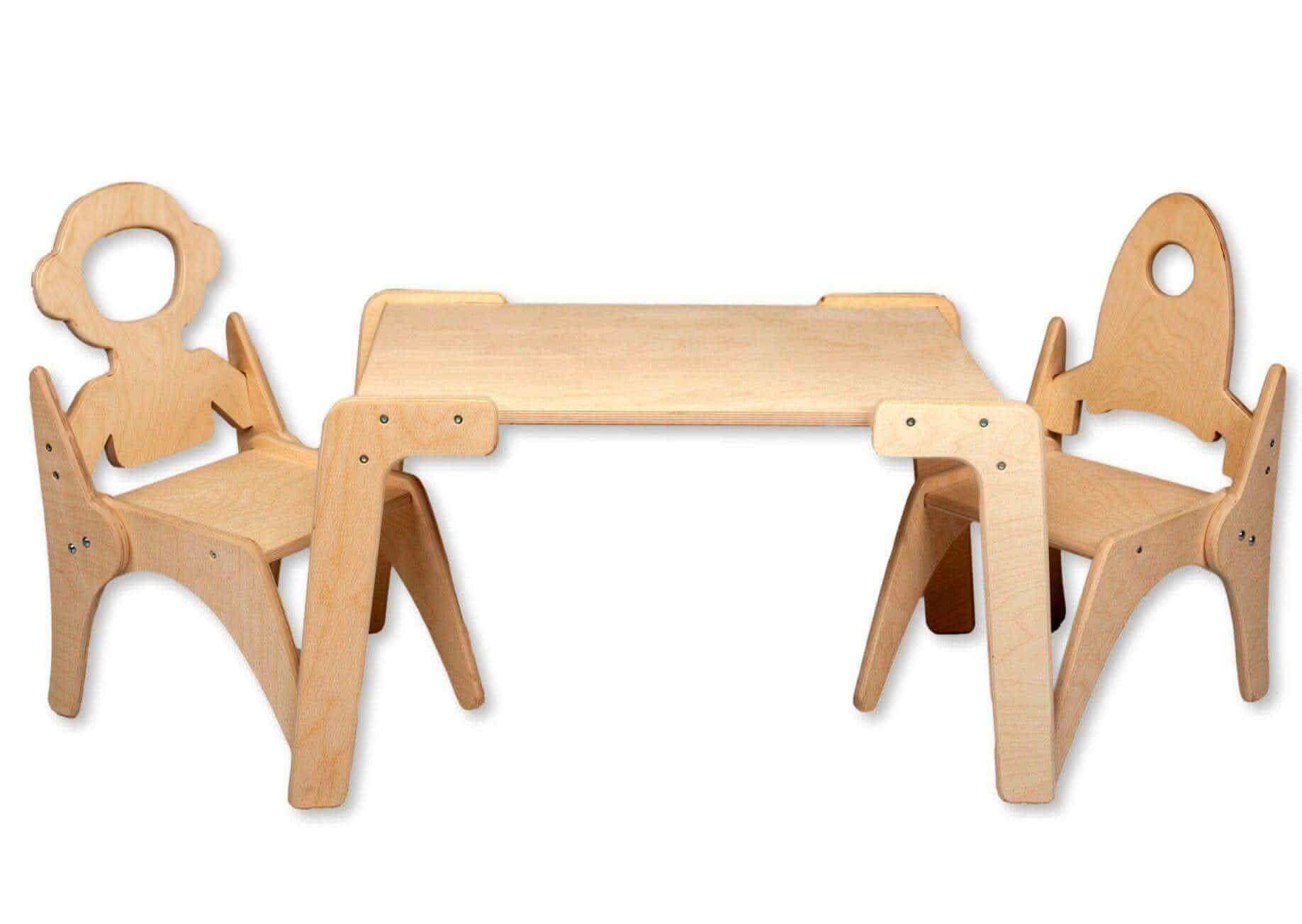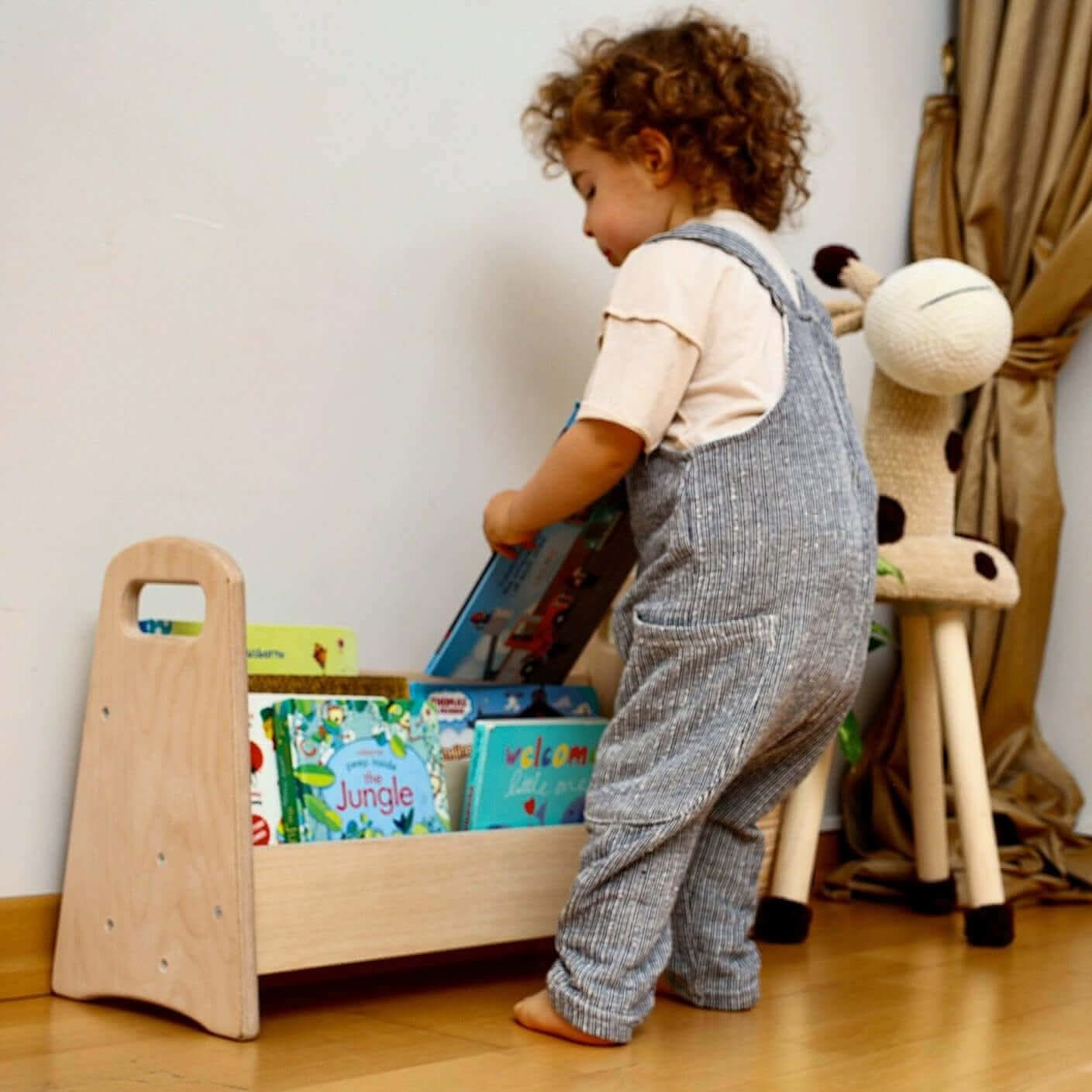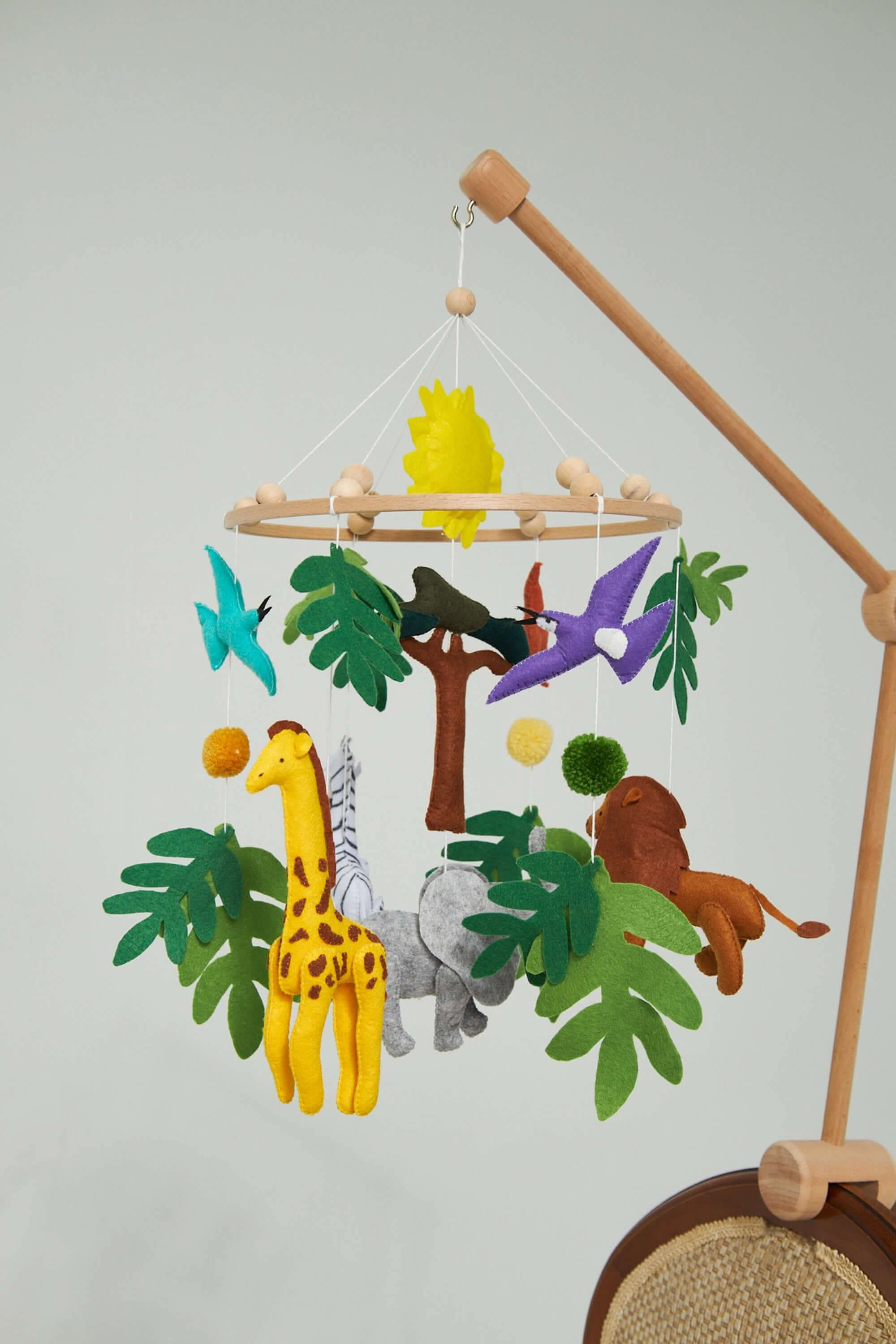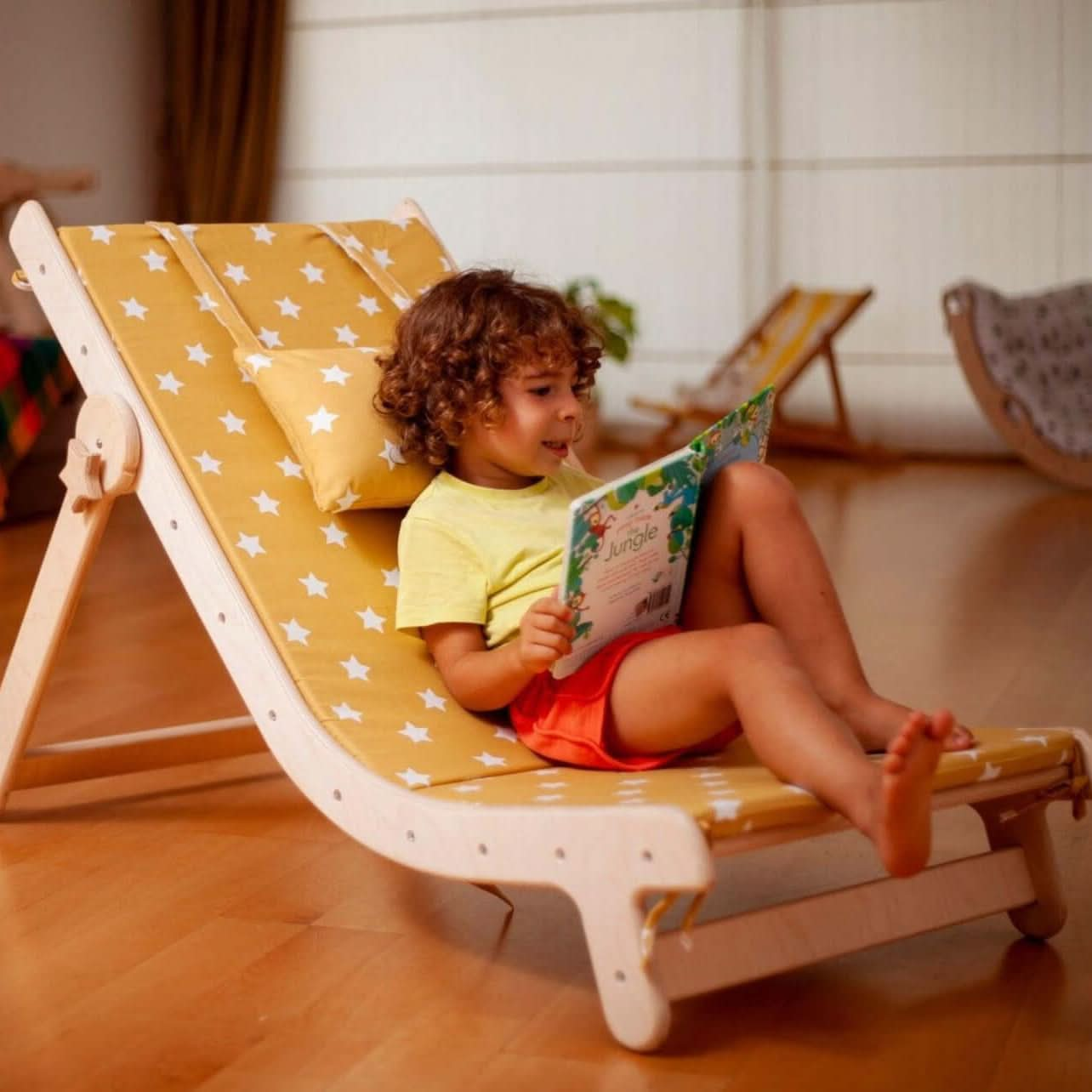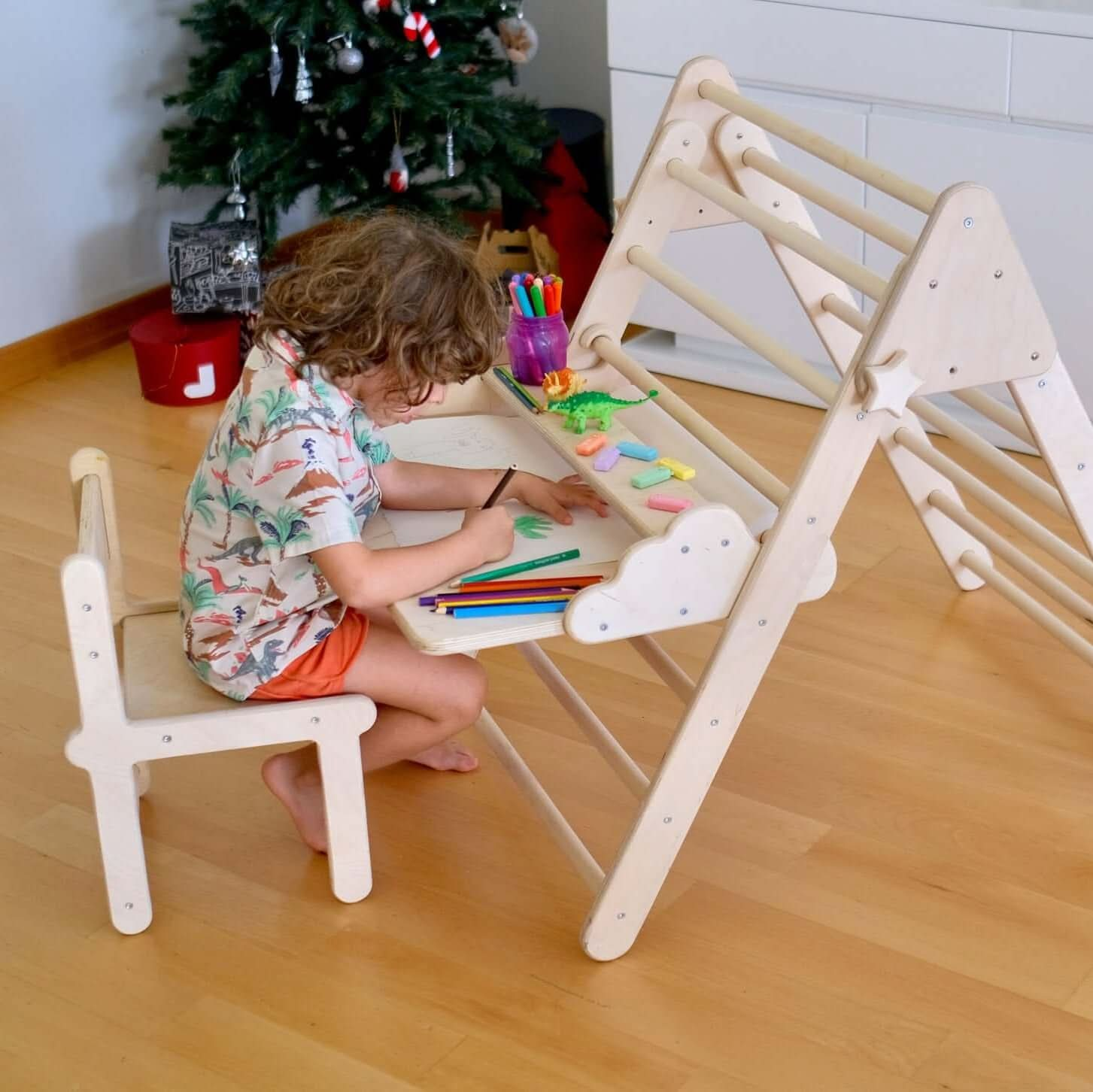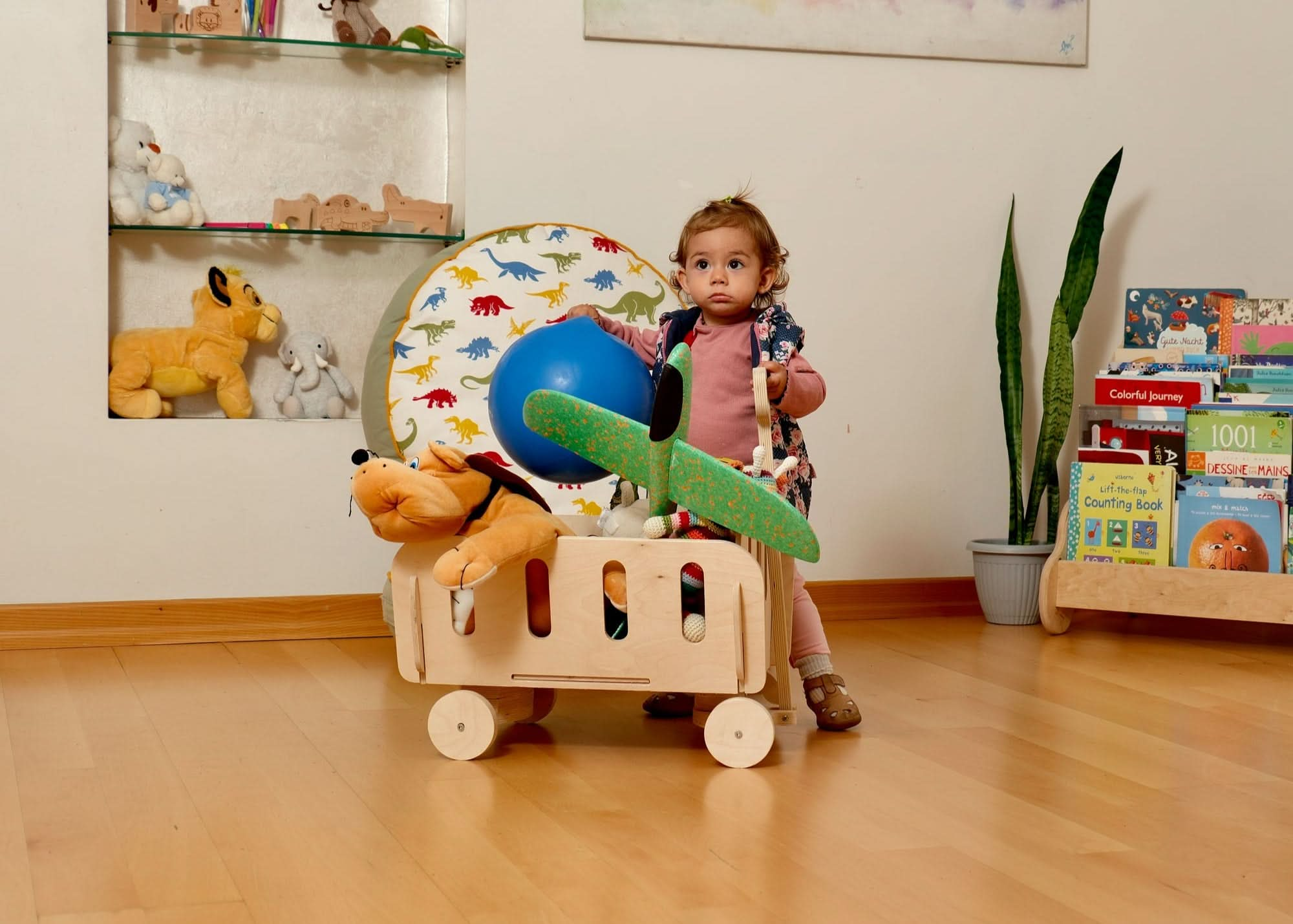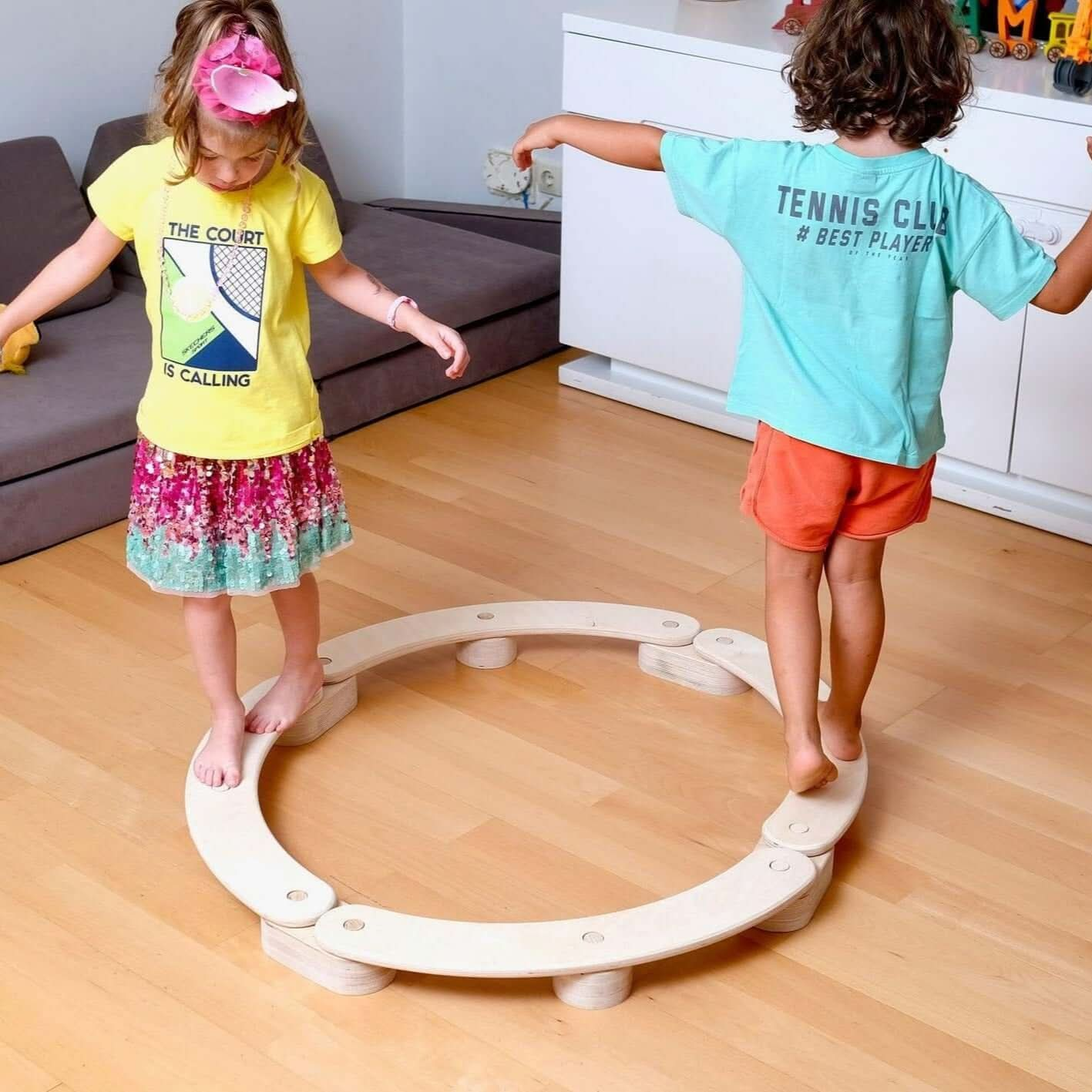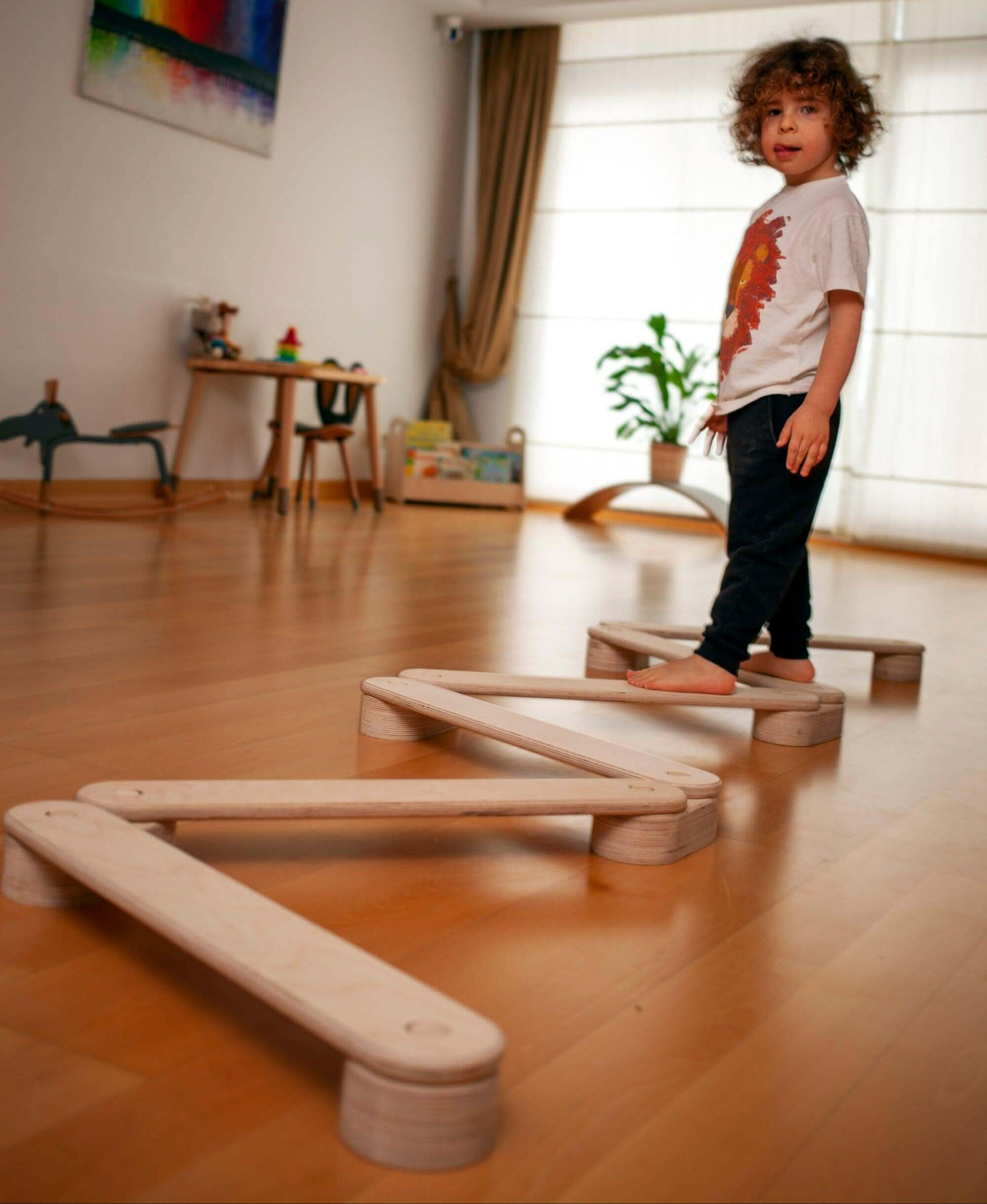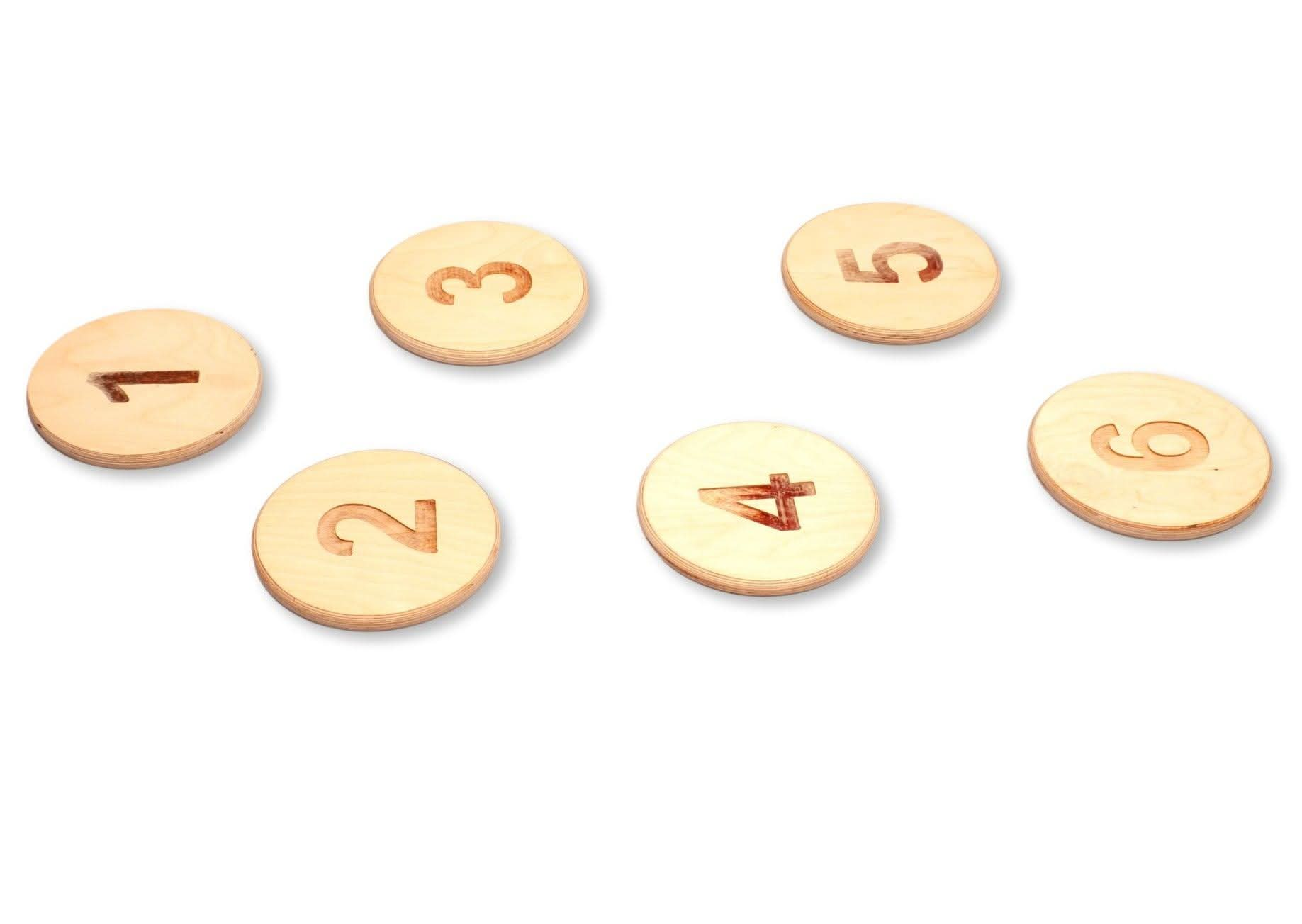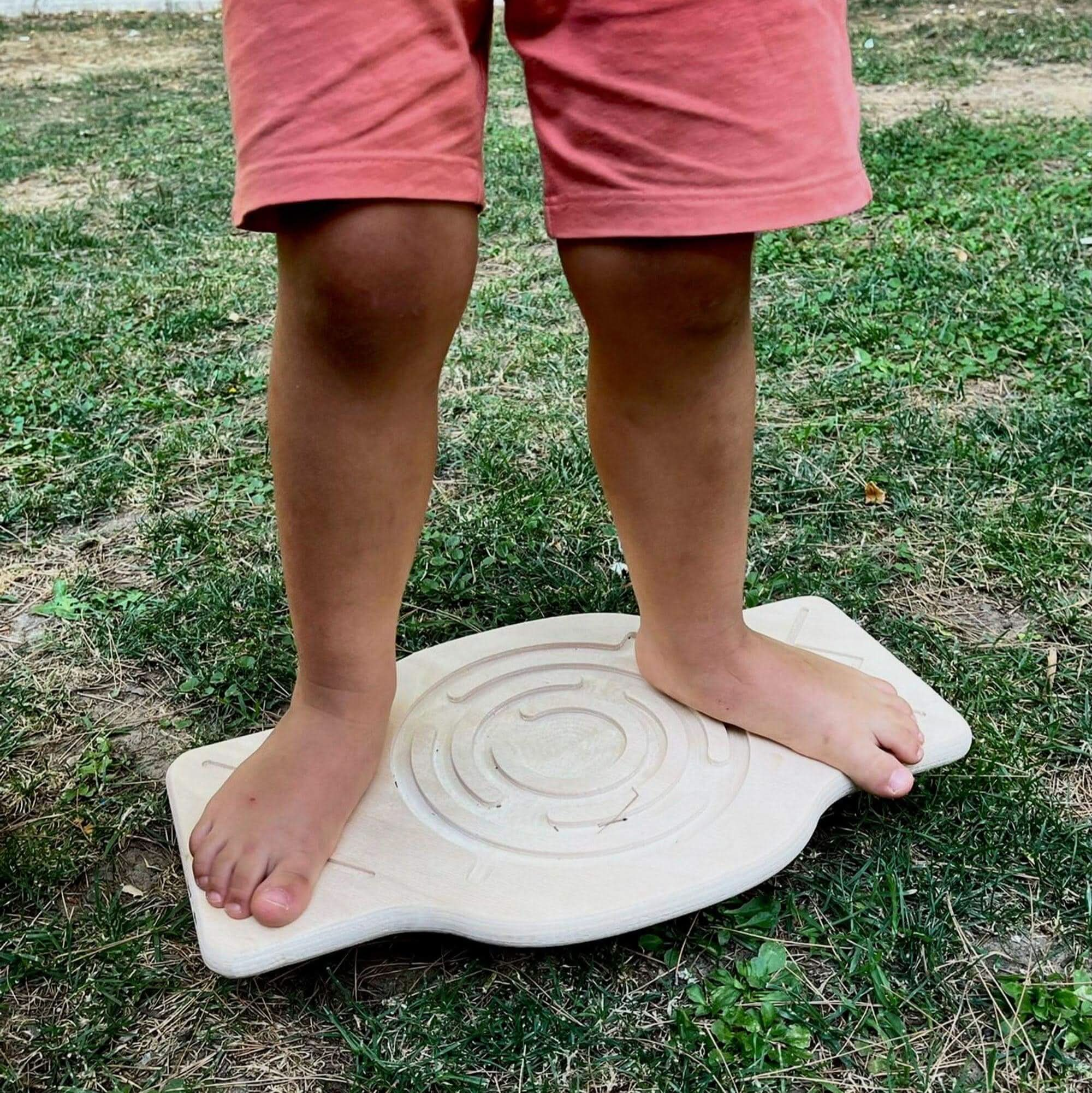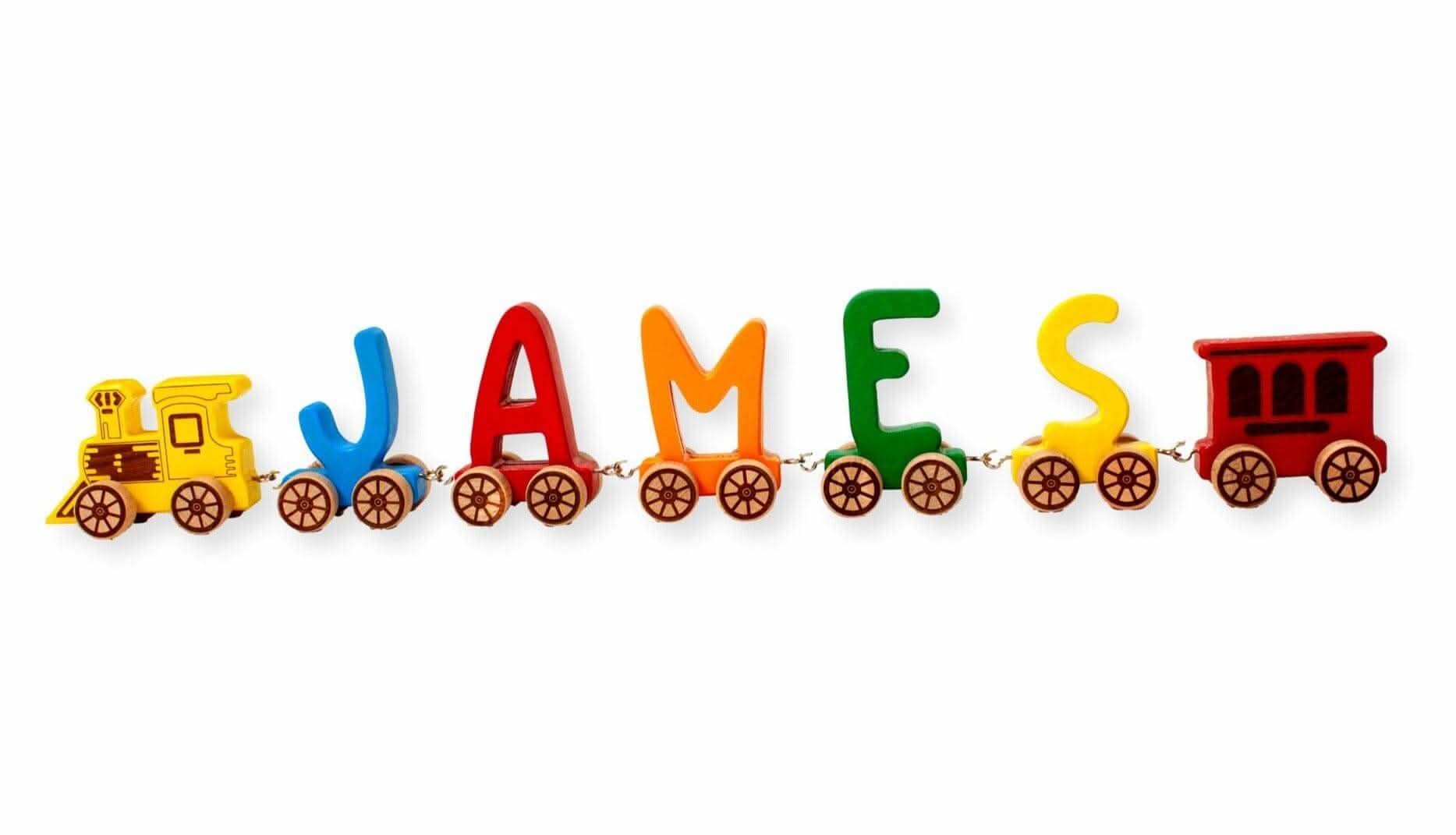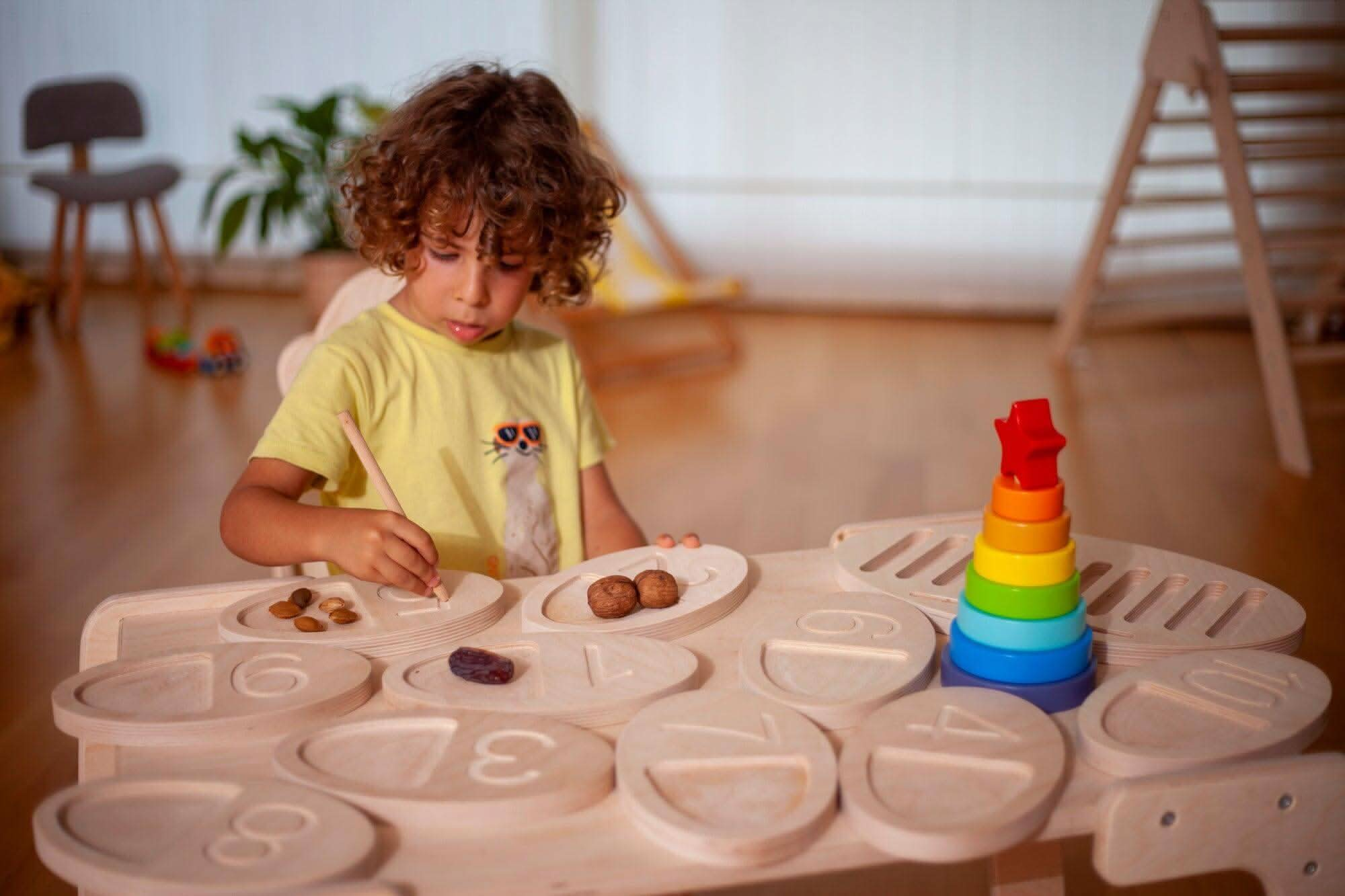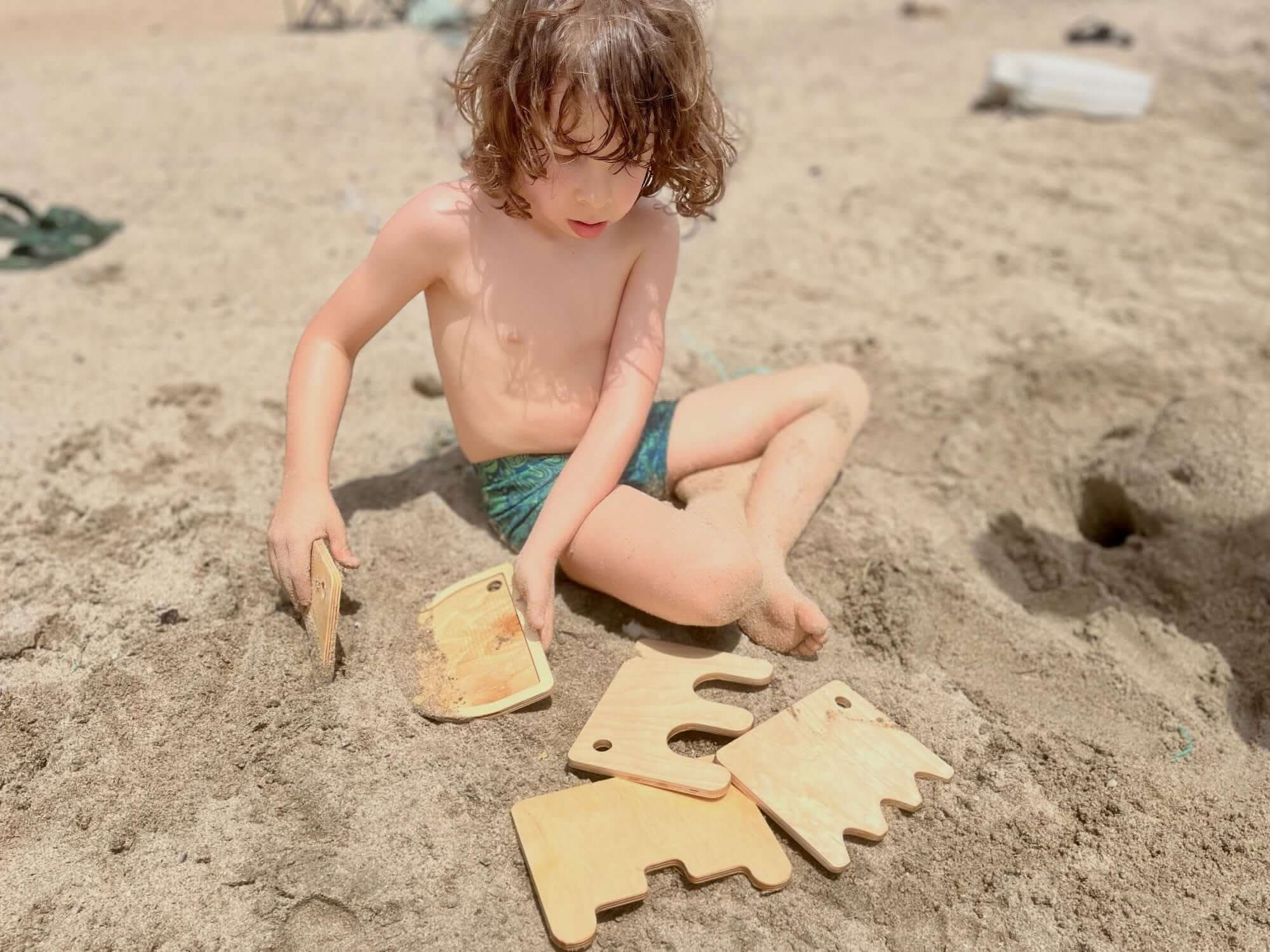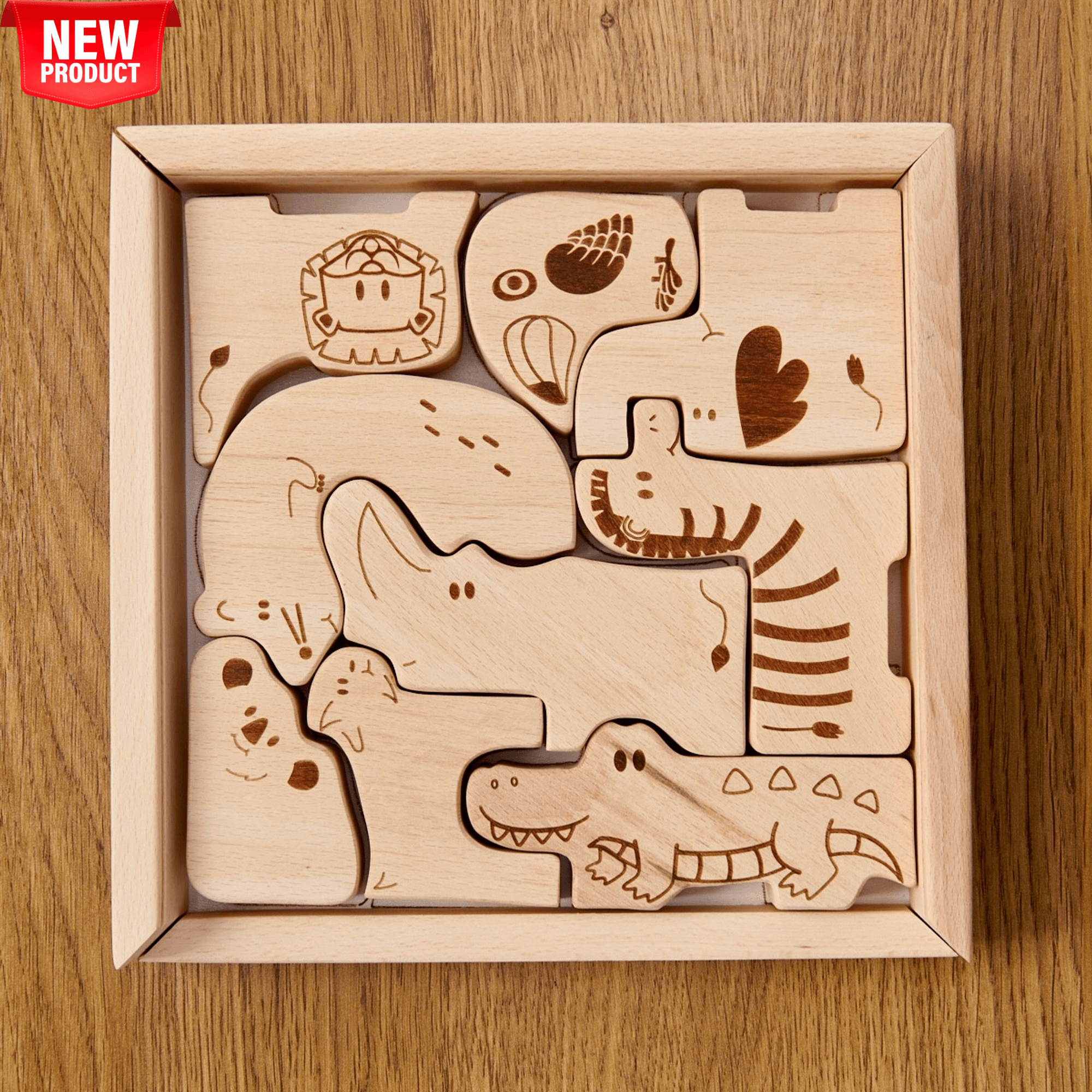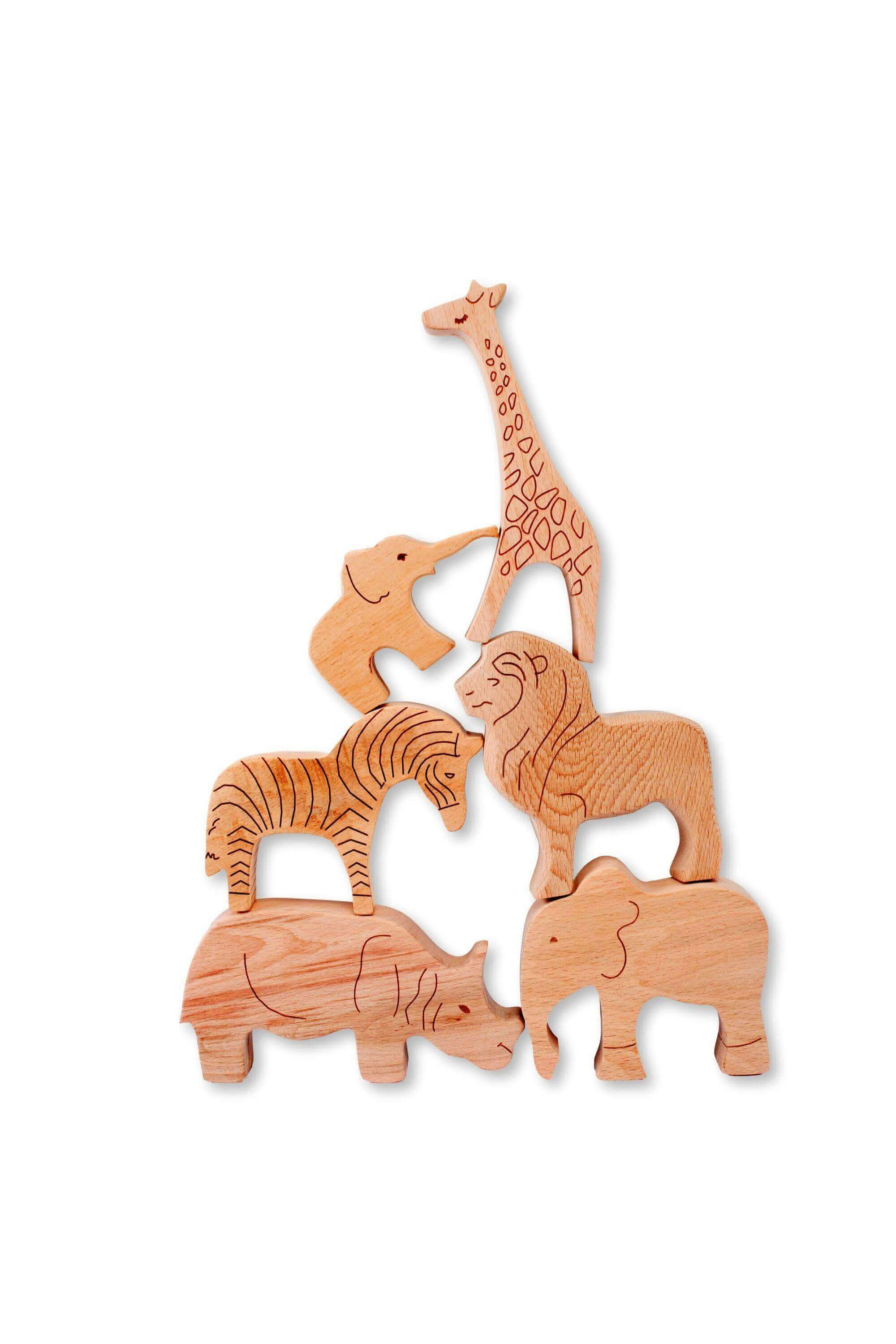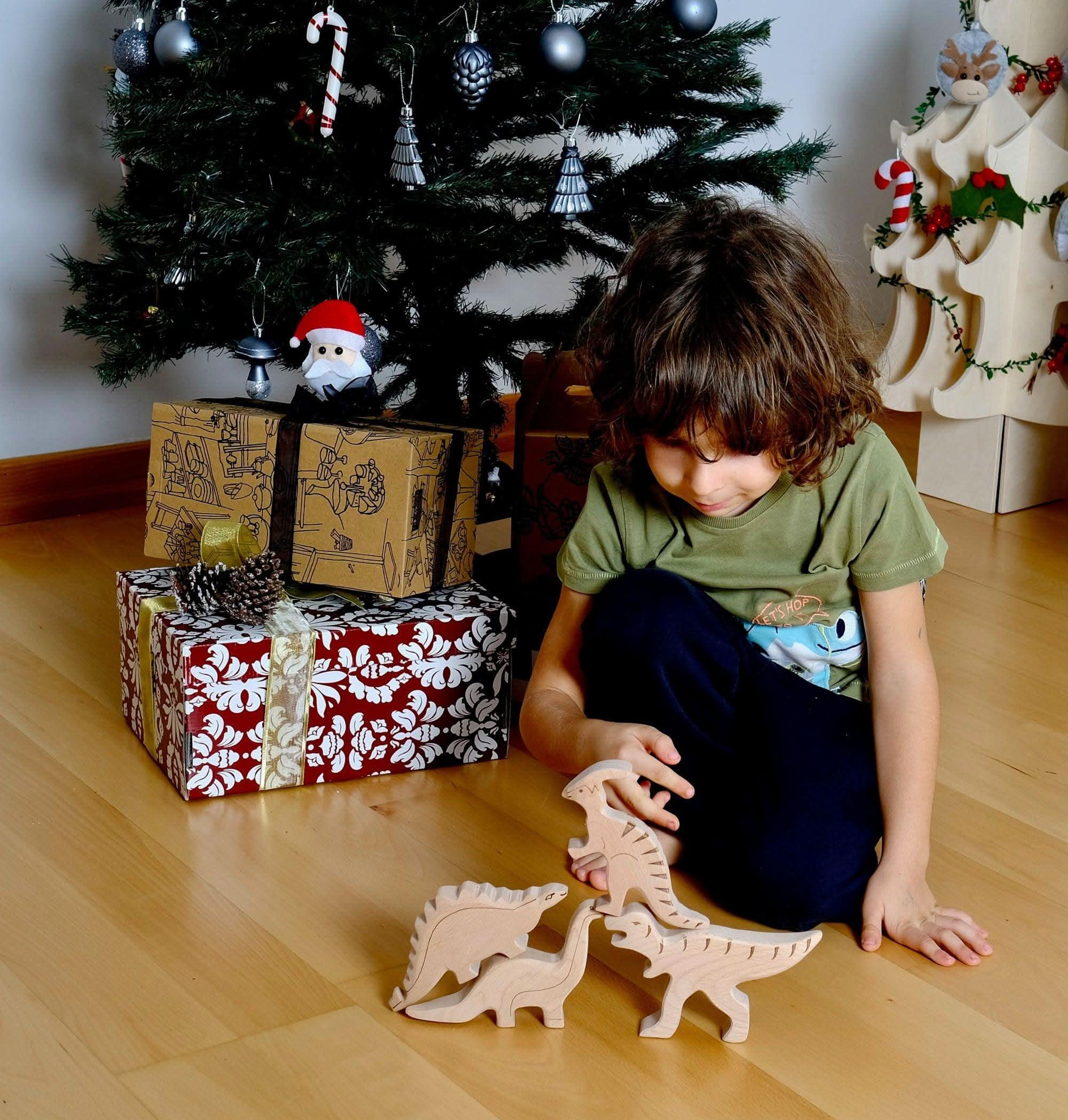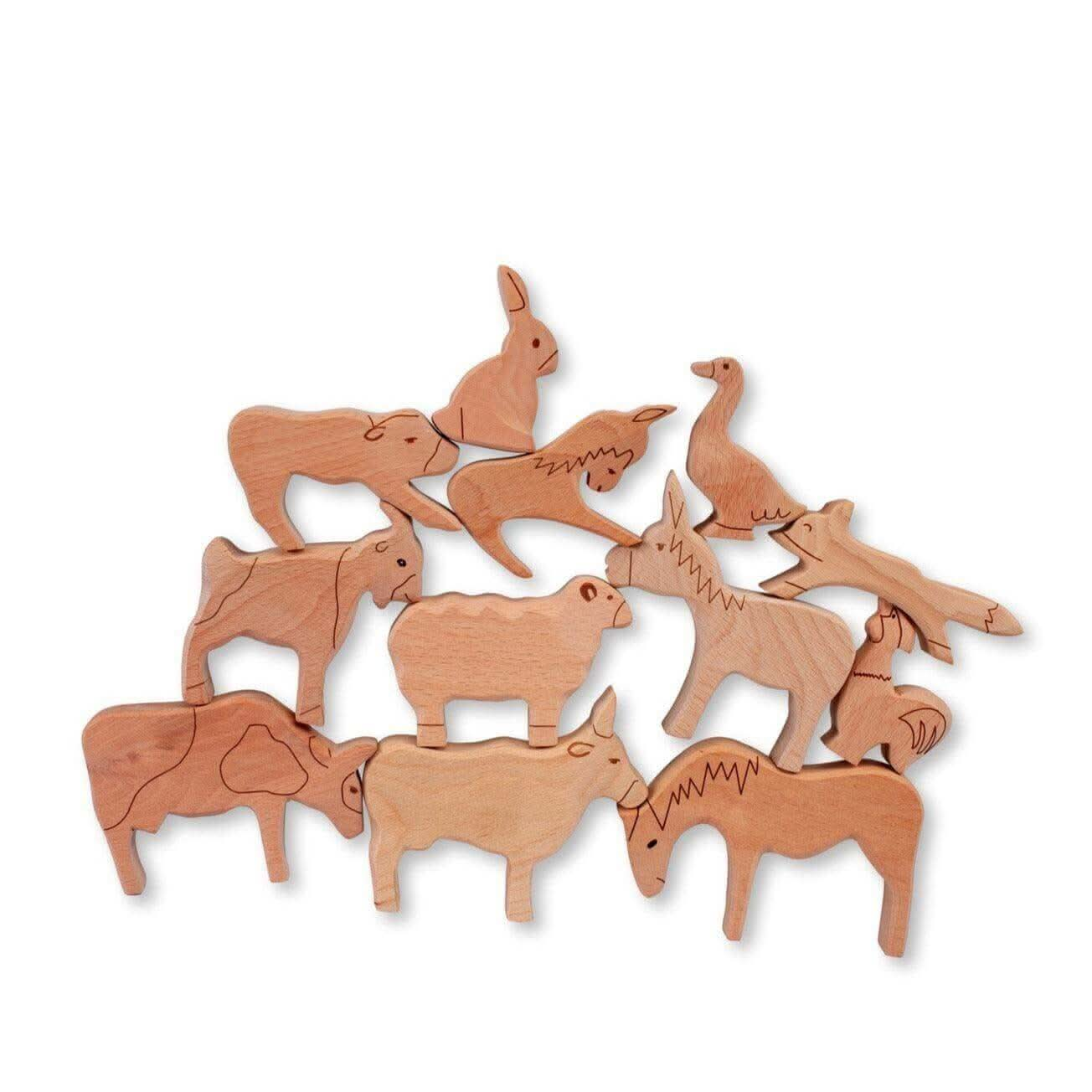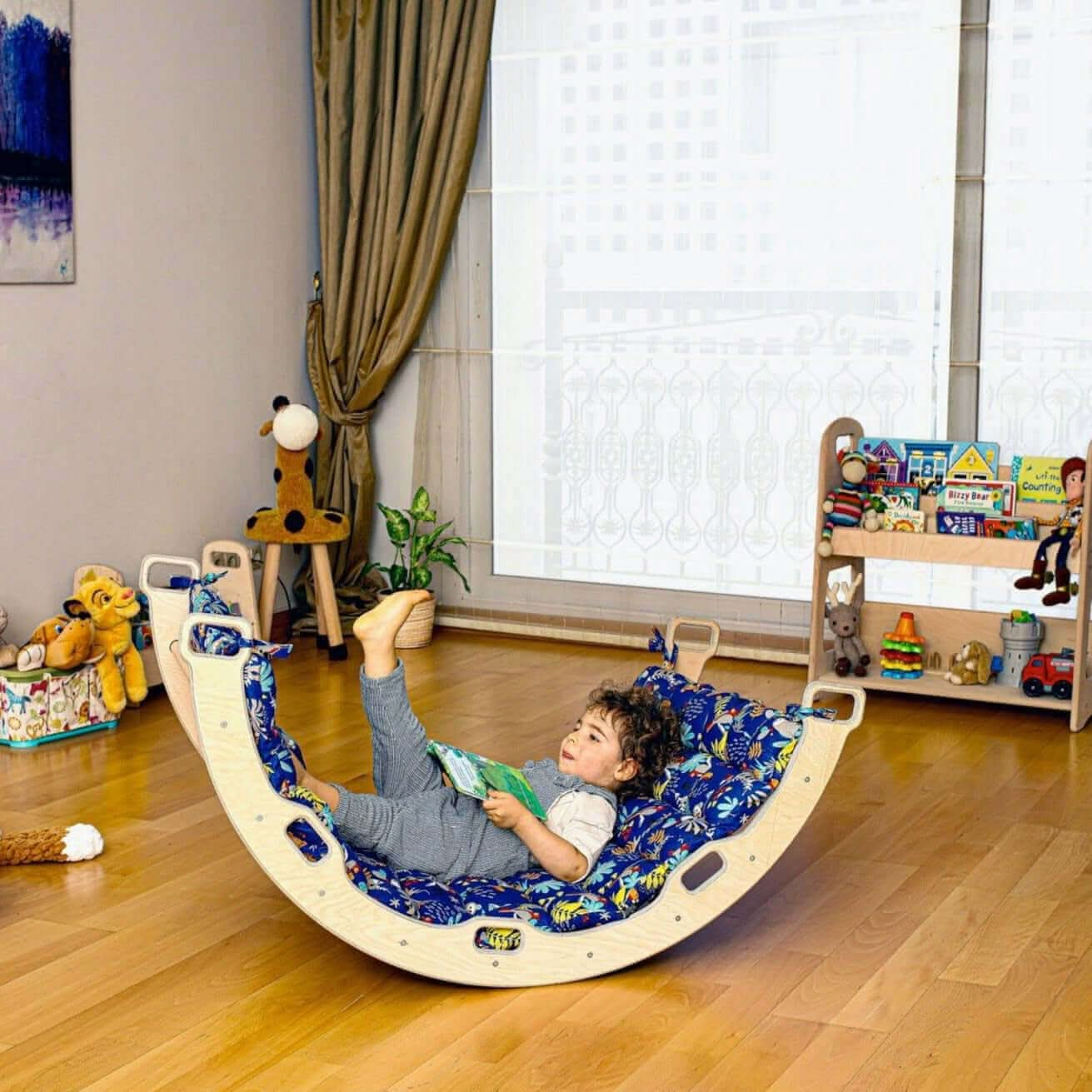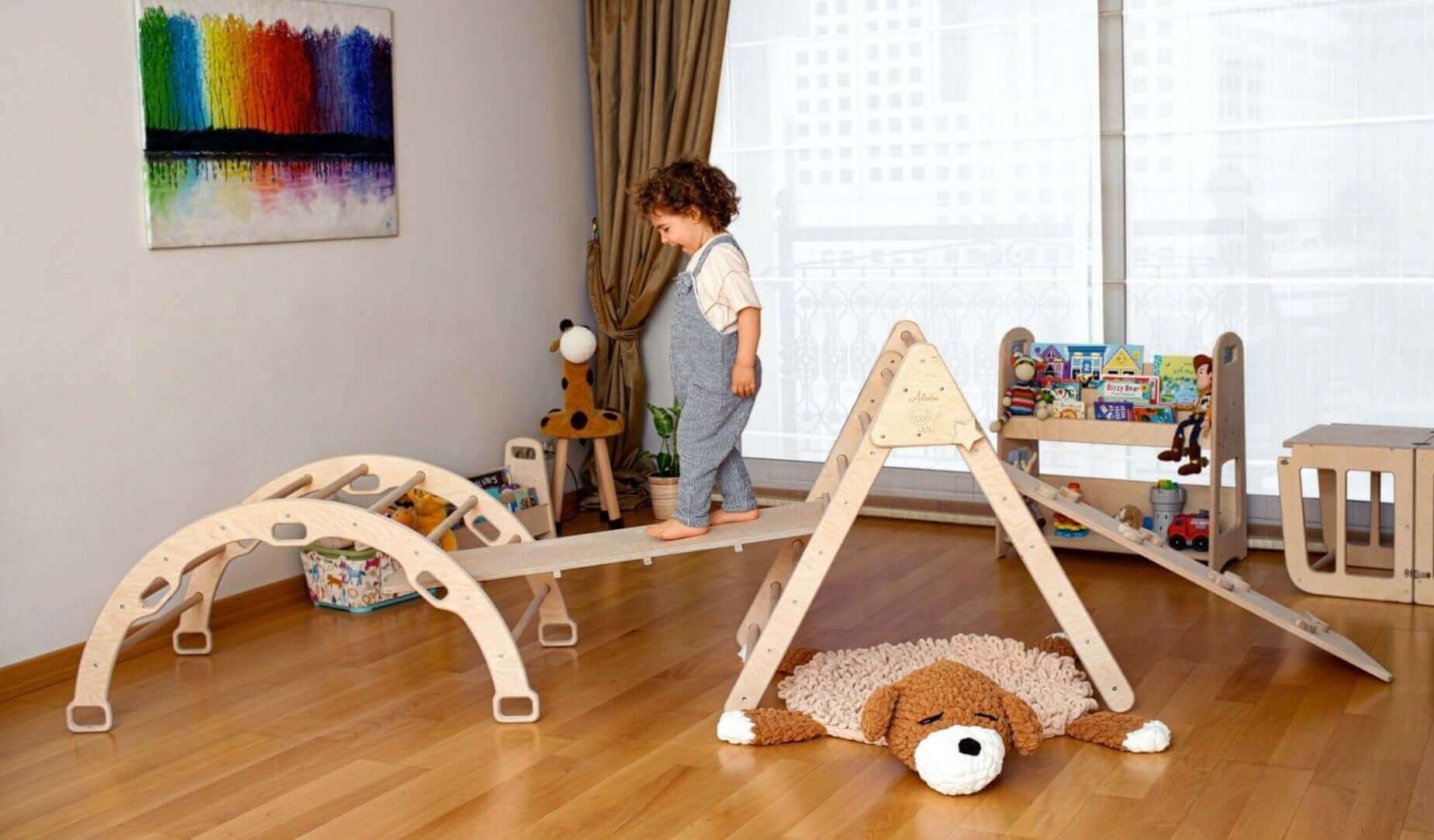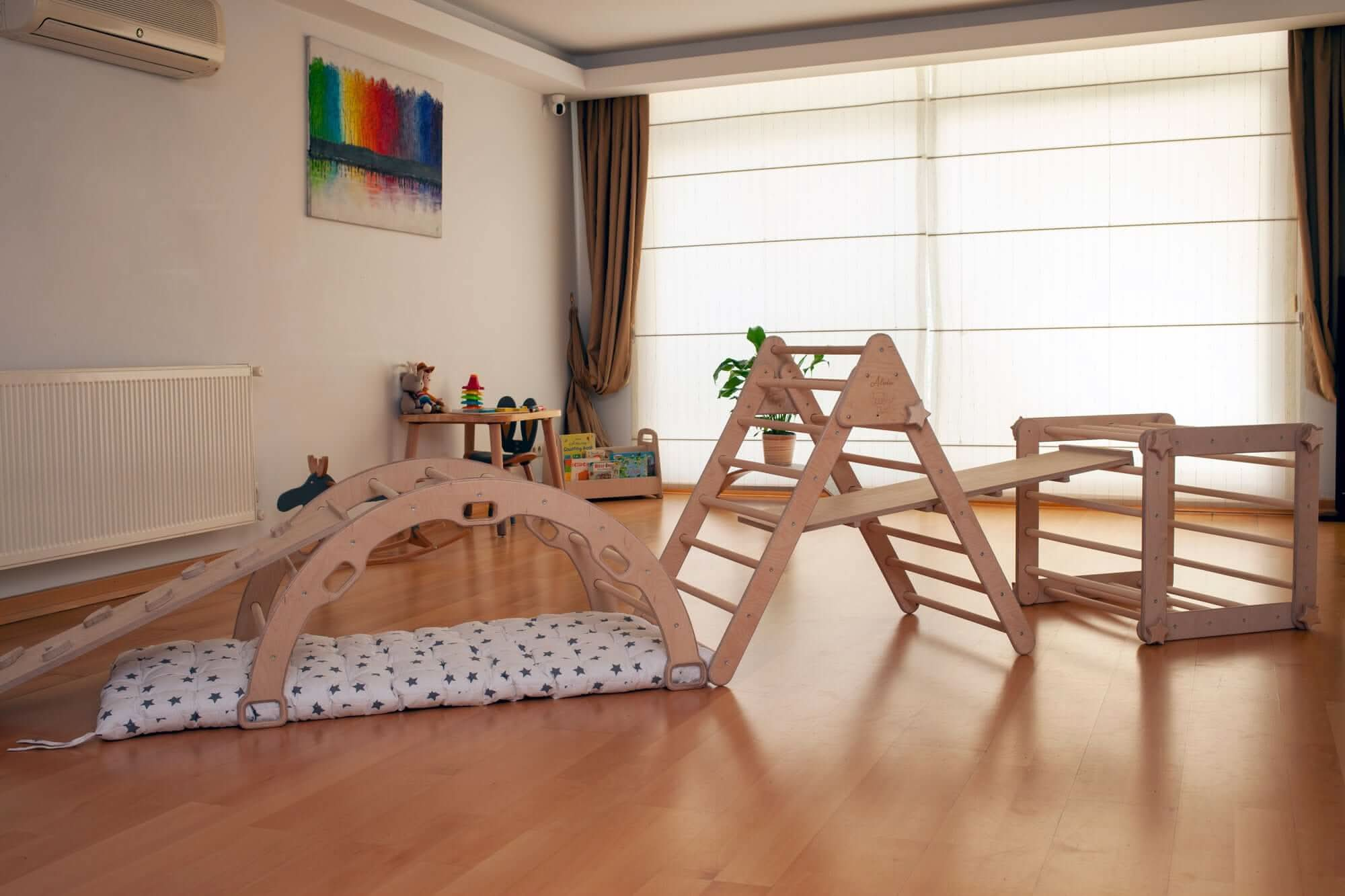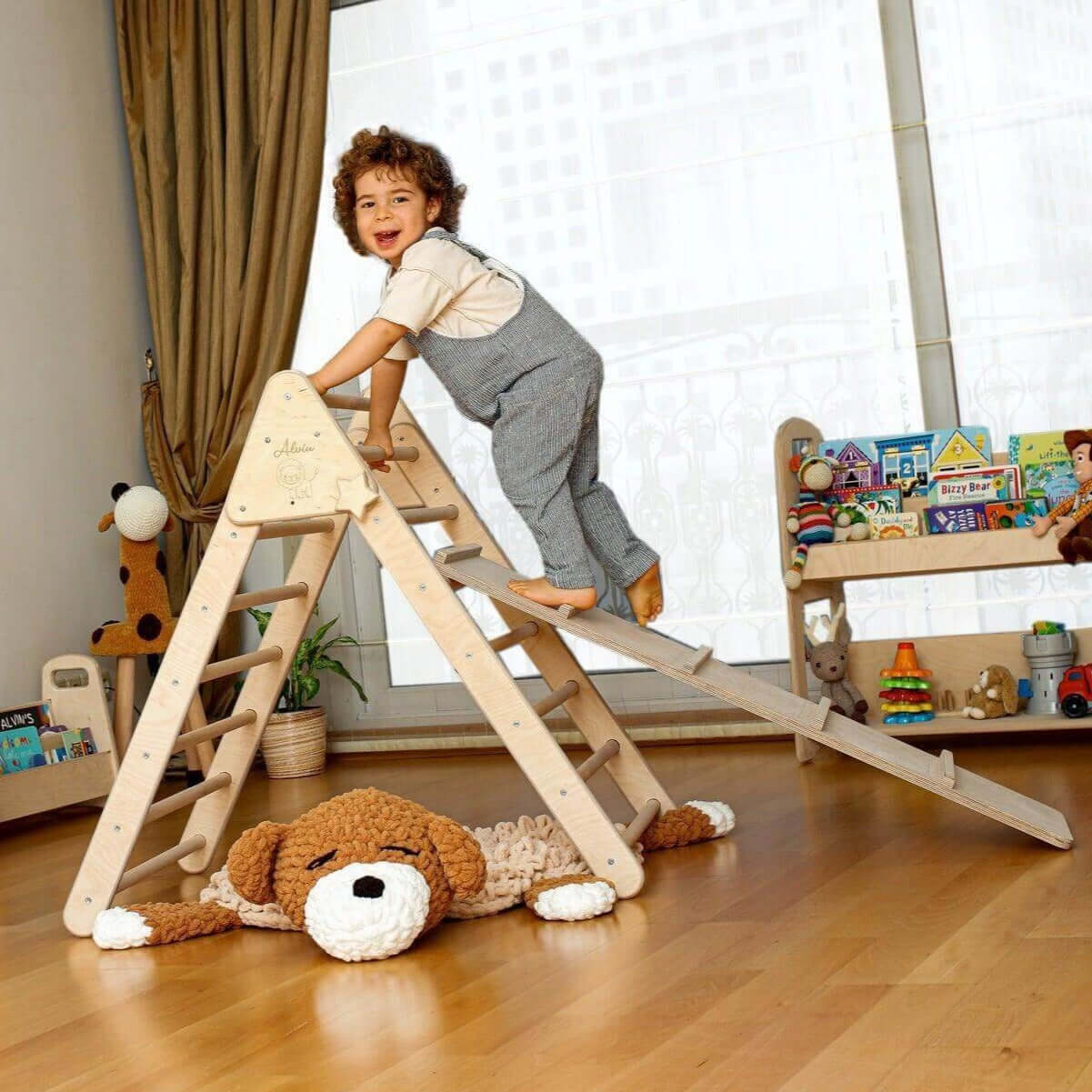
· By halit burak capraz
Why Every Parent Should Consider a Pikler Triangle for Their Toddler's Development
Toddlers are natural explorers and climbers, always eager to test their limits and discover new abilities. The Pikler Triangle is a versatile and innovative Montessori-inspired climbing frame designed to support toddlers' physical and cognitive development. In this article, we will explore the various benefits of introducing a Pikler Triangle into your child's playtime, and why it could be a valuable addition to your home.
What is a Pikler Triangle?
Founded on the principles of child-led play, the Pikler is more than just a wooden climbing triangle; it's a gateway to endless developmental benefits for toddlers. This innovative frame was conceptualized by Hungarian pediatrician Dr. Emmi Pikler back in the mid-20th century. Her philosophy centered around the natural progression of motor skills and self-initiated movement in young children—essentially, letting kids be kids, but with a touch of scientific finesse.
So, what exactly is a Pikler Triangle? Imagine it as the toddler's ultimate jungle gym, scaled down to a size that's perfect for little adventurers. Crafted from eco-friendly wood, this Montessori climbing frame is designed to nurture a safe environment for toddlers to navigate physical challenges at their own pace. Kids as young as six months can begin to explore its various levels, and before you know it, they’re scaling it like tiny pros.
Why is this seemingly simple structure so effective? It promotes:
- Motor Skill Development: During those early years, every little movement counts. A study by the American Journal of Occupational Therapy found that climbing activities can significantly boost fine and gross motor skills (1).
- Coordination: Moving up, down, and around the triangle helps toddlers develop the coordination necessary for everyday tasks. Think of it as practice for when they soon become experts in dodging coffee tables and siblings alike.
- Confidence: As toddlers master each level of the Pikler Triangle, their sense of achievement skyrockets. Dr. Pikler herself noted, "Children must be taught how to think, not what to think," (2) emphasizing the role of self-guided play in fostering independence.
One of the beauties of the Pikler Triangle lies in its adaptability. There are countless Pikler Triangle ideas and configurations to keep the play dynamic. Some models even come with ramps or can be folded for convenient storage, making it one of the best Pikler Triangle choices for modern living spaces.
As a parent, there’s nothing quite like watching your child explore new heights—literally and figuratively. The Pikler Triangle provides that thrill in a safe and enriching manner, transforming your living room into a mini-adventure park, without the risk of an unexpected trip to the ER. After all, if you’re going to invest in toys, why not opt for something that's backed by half a century of child development science?
"Play is the highest form of research." — Albert Einstein.(1) American Journal of Occupational Therapy, volume 66, issue 4, 2012. (2) Pikler-Lóczy Association Hungary.
Pikler Triangle Benefits for Toddlers
Introducing a Pikler Triangle to your toddler's playtime can a range of developmental benefits, turning your living room into an engaging mini-gym and learning haven. Firstly, let’s talk about enhancing those gross motor skills. Climbing, balancing, and reaching on a sturdy Pikler Triangle are akin to a toddler’s version of an Olympic workout. According to child development experts, such physical activities are crucial for developing muscle strength and coordination in the early years. Plus, it’s far more adorable than a treadmill session.
One of the magical aspects of a Pikler Triangle is its ability to encourage independent play and problem-solving skills. Imagine your little one, deep in concentration, figuring out how to navigate the climbing frame. This kind of self-directed play not only keeps them entertained but also stimulates cognitive development. "Play is the highest form of research," Albert Einstein once said, and your child is definitely conducting some important 'research' on that triangle!
Spatial awareness and coordination are next on the list. As your toddler maneuvers around the Pikler Triangle, they are developing a keen sense of how their body moves in space. This could mean fewer bumps and bruises as they become more adept at navigating their environment. It's like having a tiny acrobat in training, minus the circus rigging.
Let’s not forget about the confidence-building aspect. Each successful climb and descent boosts your toddler’s self-esteem and belief in their physical abilities. It’s a simple yet effective way to instill a sense of achievement and courage, laying the groundwork for a can-do attitude that extends beyond physical play.
The Pikler Triangle is truly a multifunctional climbing frame that syncs perfectly with the Montessori philosophy of learning through play. It’s an all-in-one tool that fosters physical, cognitive, and emotional development, making it a must-have for any parent interested in their child's holistic growth. So, next time you're considering new play equipment, remember, the Pikler Triangle is more than just a toy—it's an investment in your child's future.
How to Use a Pikler Triangle
The Pikler Triangle is incredibly versatile and can be used various ways to keep your toddler engaged:
- Stand-Alone Climbing Frame: At its core, the Pikler Triangle serves as an exemplary climbing frame. Toddlers can explore its array of rungs, each climb contributing to the development of their motor skills. According to a comprehensive study by "Early Childhood Development Journal," climbing structures like the Pikler Triangle significantly boost toddlers' coordination and muscle strength.
- Incorporate a Ramp: Adding a ramp introduces a whole new dimension of play. Whether your child uses it to slide, climb, or test their balance, the ramp extends the playground experience. Think of it as a mini-experiment in physics for your little one; sliding down provides amusement while climbing up enhances their physical endurance.
- Creative Obstacle Courses: Unleash your toddler's inner ninja by transforming the Pikler Triangle into a part of a complex obstacle course. Combine it with other climbing toys to create an exciting play arena. This not only keeps them entertained but also stimulates problem-solving skills. As famed pediatrician Dr. Emmi Pikler, the brain behind the Triangle, once said, "Allow the child to be active, and he will learn by himself."
With continual supervision, the Pikler Triangle can be a safe and thrilling addition to your toddler's indoor playtime. It's generally classified as a "Montessori motor skills" toy, designed to encourage independent play while ensuring safety. For those concerned about space, a folding Pikler Triangle can offer the same level of engagement without occupying the entire living room.
“In play, a child always behaves beyond his average age, above his daily behavior; in play, it is as though he were a head taller than himself.” — Lev Vygotsky, Developmental Psychologist
Safety Considerations
While the Pikler Triangle is designed for safety and stability, are some important considerations to keep in mind:
- Always supervise your toddler while they are using the climbing frame. Ensuring a watchful eye could prevent the next great climbing accident—and save you from discovering just how much your child "loves" emergency rooms.
- Ensure that the Pikler Triangle is set up on a soft, non-slip surface to prevent any injuries from falls. Think of it as setting up a cushy runway for your toddler's burgeoning climbing career. According to the American Academy of Pediatrics, nearly 50% of toddler injuries occur from falls. So, a padded surface is not just a luxury; it's a necessity.
- Check the triangle for stability and secure all joints and screws periodically. Just like you wouldn’t drive a car with loose bolts, a periodic "Pikler Triangle Pit Stop" could prevent accidents and keep the fun times rolling. A study by Safe Kids Worldwide noted that 80% of falls in children under five happen from products at home, so make sure your Pikler Triangle isn't part of that statistic.
"Safety doesn’t happen by accident." — Author UnknownFollowing these safety tips will ensure a fun and secure environment for your toddler. After all, happy climbing means safer playing, and isn’t that the ultimate parenting win?
Choosing the Best Pikler Triangle for Your Toddler
When you're navigating the world of toddler climbing toys, choosing the Pikler Triangle can feel like finding a needle in a haystackonly if the hay were made of wooden climbing frames. Pardon the dramatics; let's dive into what truly matters when selecting a Pikler Triangle for your little one.
First off, let's talk about Material. Eco-friendly, non-toxic wooden materials should be your go-to. As parents, we aim for products that are not just whimsically fun but also safe. A well-constructed Pikler Triangle ensures your child's safety and longevity of the product. According to Montessori Nature, "Wooden toys, unlike their plastic counterparts, are environmentally friendly and often more durable." So, you're not just investing in a toy; you're investing in sustainability.
Design is another crucial factor. Look for a sturdy and stable design—preferably one that offers adjustable height options. Such a feature allows the triangle to grow with your child, essentially making it a lifelong friend. A study by the Education Resources Information Center (ERIC) highlights that toys that evolve with a child's developmental stage tend to be more engaging and beneficial in the long run.
Next up, consider Additional Features. Many Pikler Triangles come with exciting extras like ramps, slides, or even a folding feature for convenient storage. Think about the space in your home and what will keep your toddler engaged. A Pikler Triangle with a ramp can transform from a simple climbing structure to a mini adventure park in your living room. According to parent reviews on Reddit's Montessori community, "Having a ramp was a game-changer for us. It added more versatility and play options."
Lastly, a pro tip: Read Reviews and consider the Age Range Recommendations. A Pikler Triangle that fits a 6-month-old might not suffice for a toddler in their "mini rock climber" phase. Look at what other parents are saying about durability, practicality, and most importantly, the fun quotient!
“We bought the Pikler Triangle when our son was one, and he’s still using it at age four. It’s the best investment we made for his indoor play.” – A Happy Parent
By keeping these factors in mind, you'll not only find the best Pikler Triangle but also invest in a tool that nurtures your child's physical, emotional, and cognitive development. So go ahead, bring home a Pikler Triangle, and watch as your toddler's world transforms into an exciting playground of endless possibilities.
Conclusion
In conclusion, the Pikler Triangle is more than just a toy; it's an all-in-one playtime powerhouse designed to advance your toddler's physical, cognitive, and emotional development. With a Pikler Triangle in your home, you’re not merely adding a piece of furniture—you’re investing in a mini jungle gym that will help build essential motor skills and boost confidence in your toddler.
Did you know that by the age of three, children can make an estimated 700 new neural connections per second? That’s right, and a Pikler Triangle is perfect for harnessing this rapid brain development through safe, self-directed play. Here's why incorporating a Pikler Triangle can be a game-changer:
- Physical Development: Climbing up and down this wooden climbing triangle improves gross motor skills, coordination, and muscle strength.
- Cognitive Development: As toddlers figure out how to navigate the Pikler, they are engaging in problem-solving activities that enhance their cognitive abilities.
- Emotional Growth: Overcoming the challenges posed by the Pikler Triangle gives toddlers a sense of achievement, bolstering their self-esteem.
Dr. Emmi Pikler, the pediatrician behind this innovative climbing frame, famously said,
"When you give children time and opportunities to climb, their minds and bodies flourish together."
So, whether it's a rainy day and your toddler needs an indoor climbing frame or you’re seeking a sturdy and adjustable Pikler Triangle for outdoor fun, consider this Montessori marvel. Not only will it keep your little one entertained, but it will also lay the groundwork for healthier growth and learning.
Remember, play is not just about fun; it's a crucial part of your toddler's holistic development. So, go ahead and let your child explore, climb, and thrive with a Pikler Triangle!

